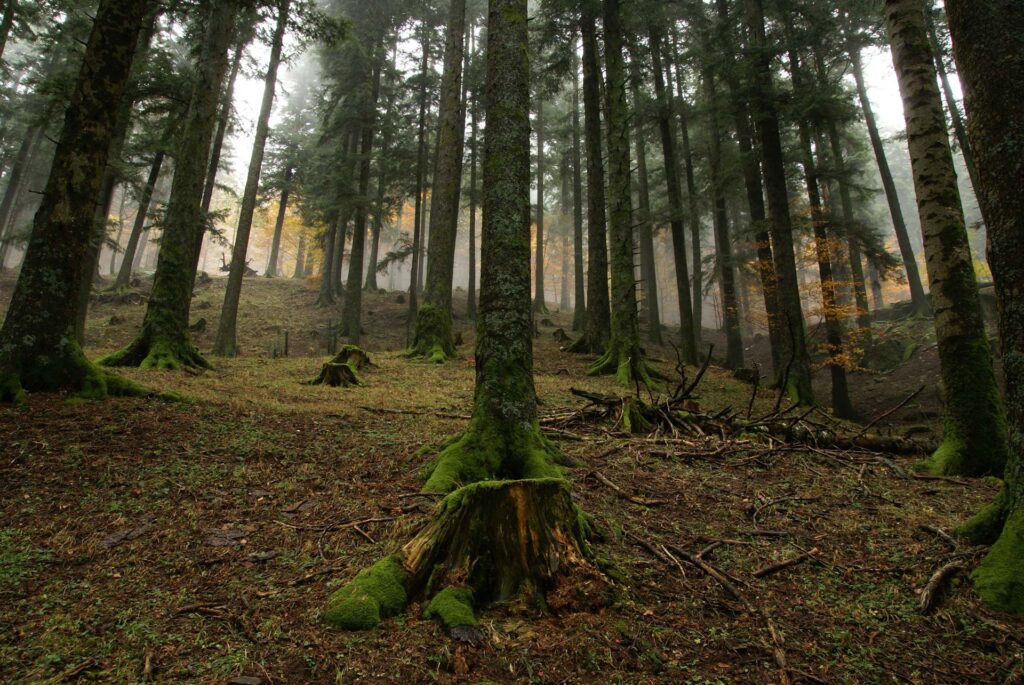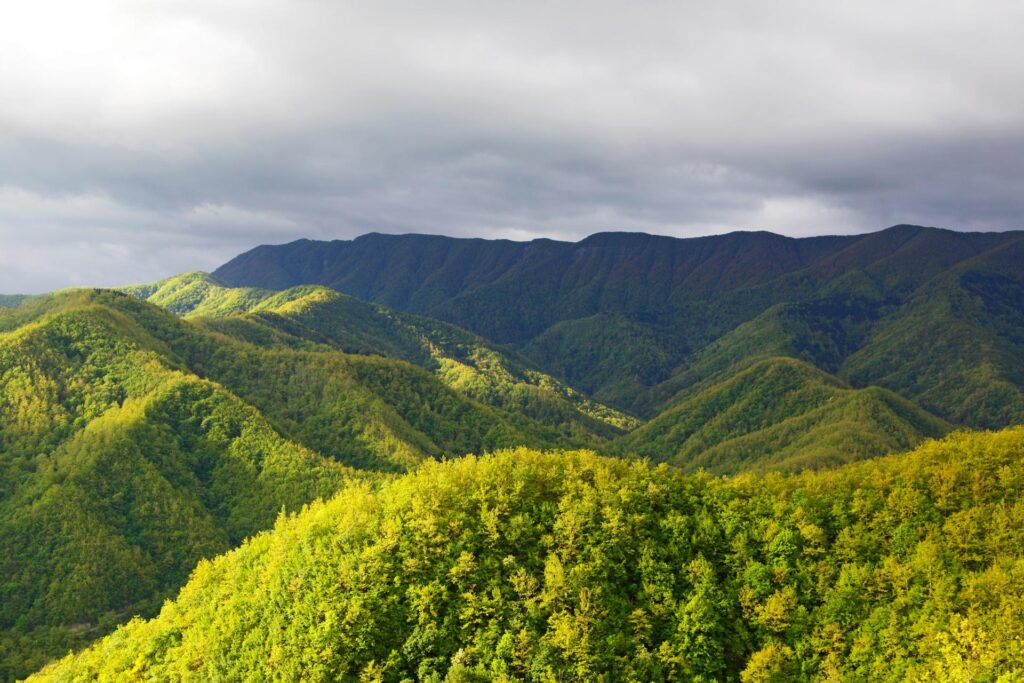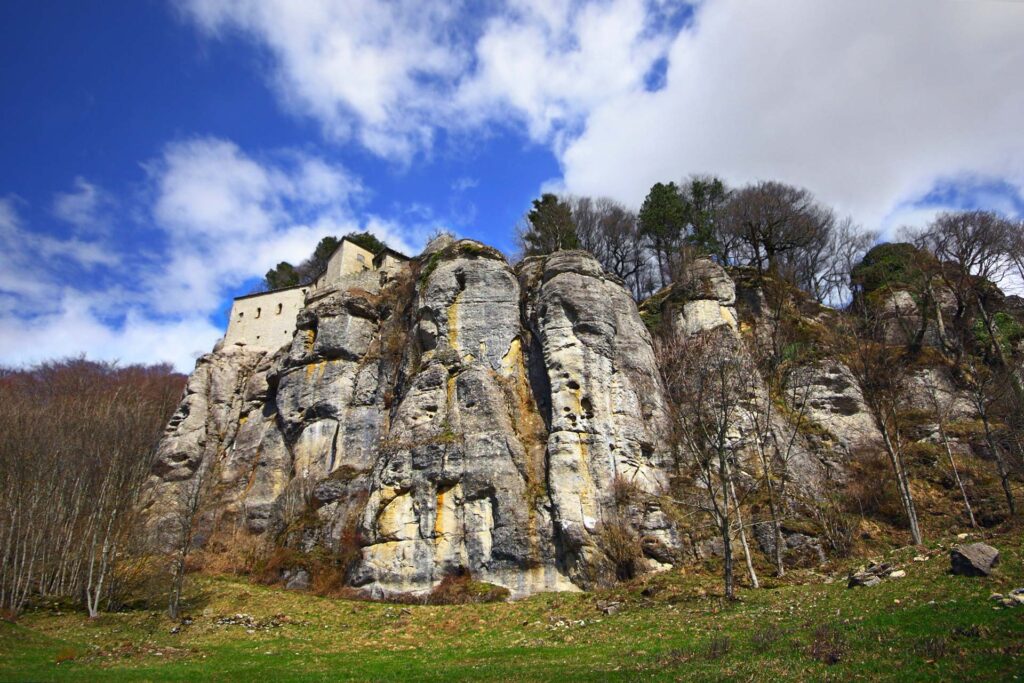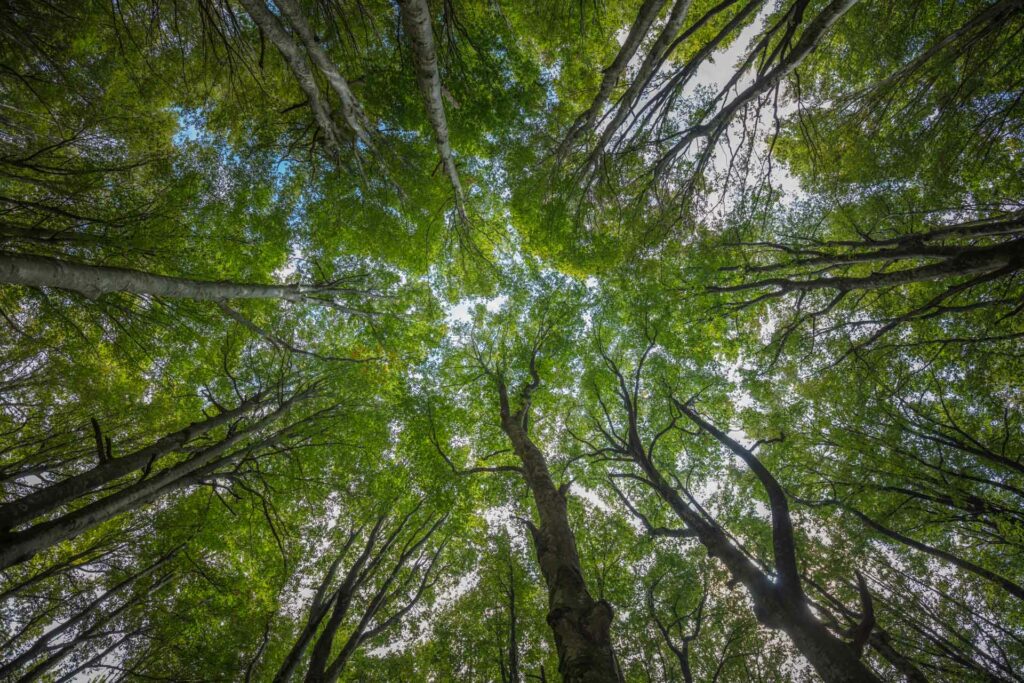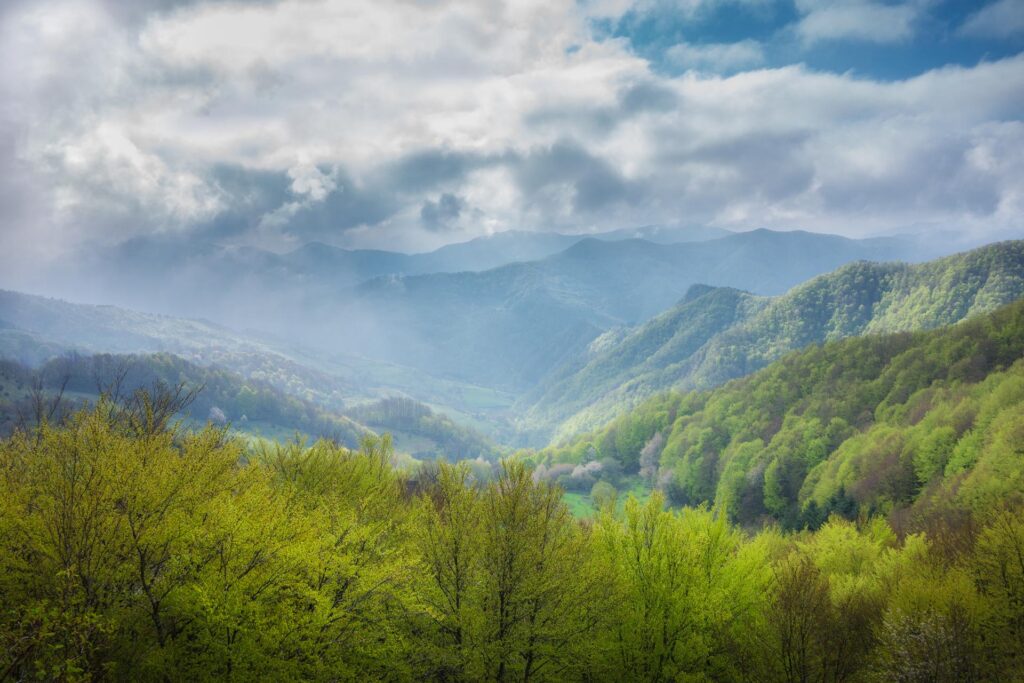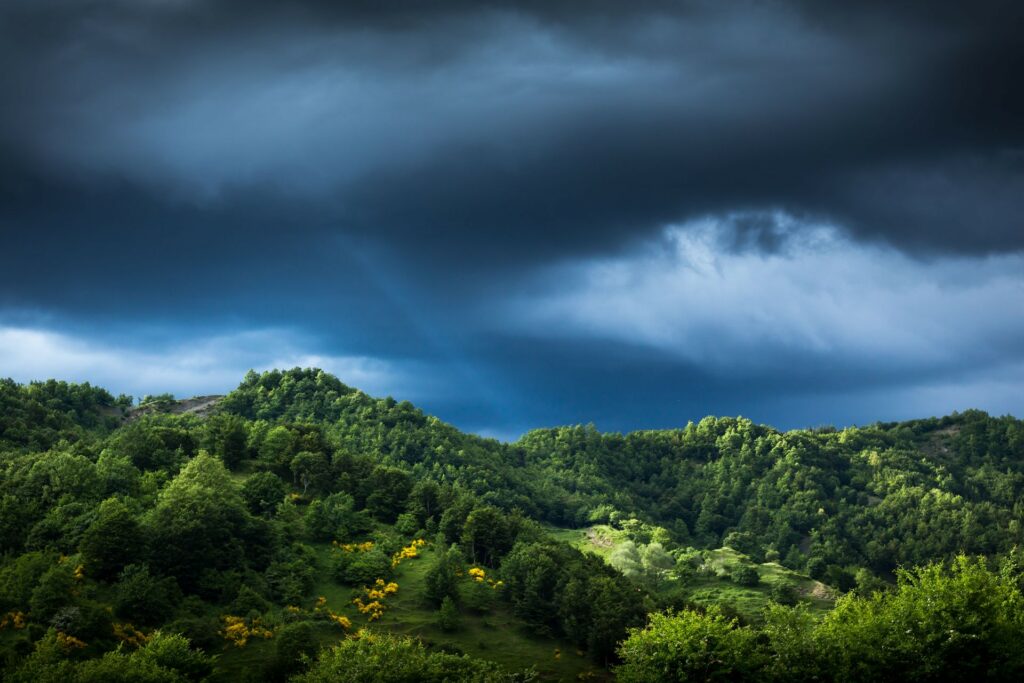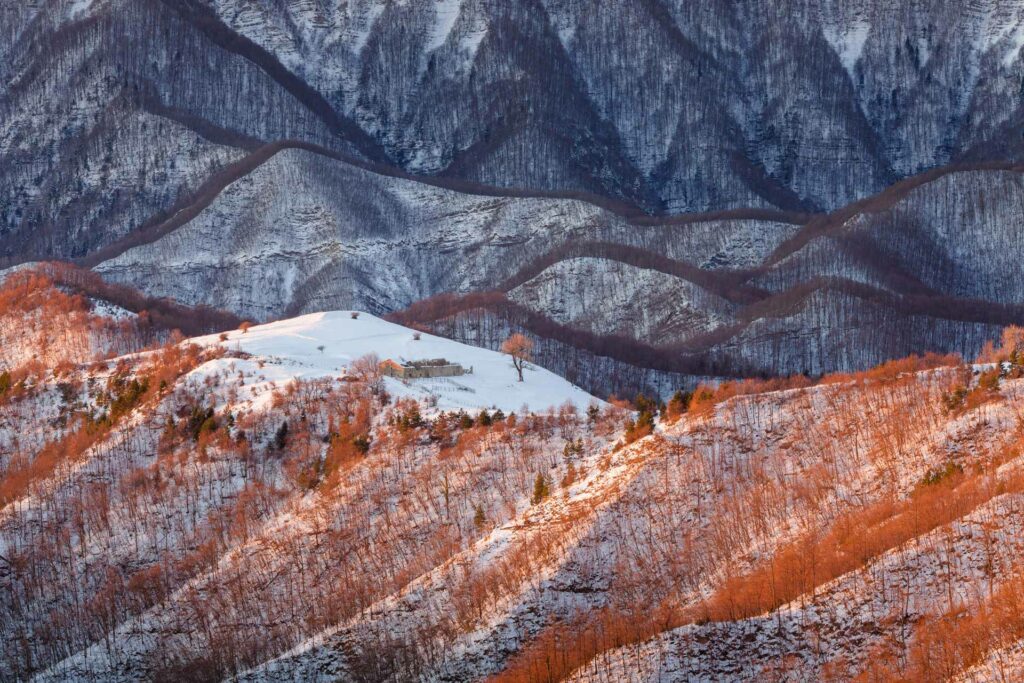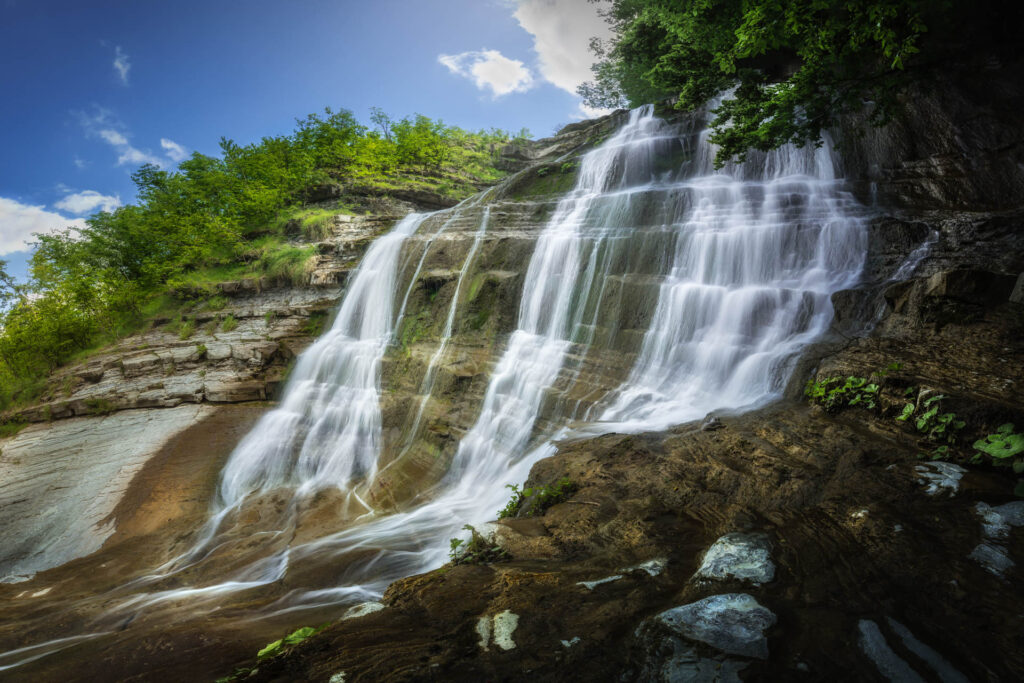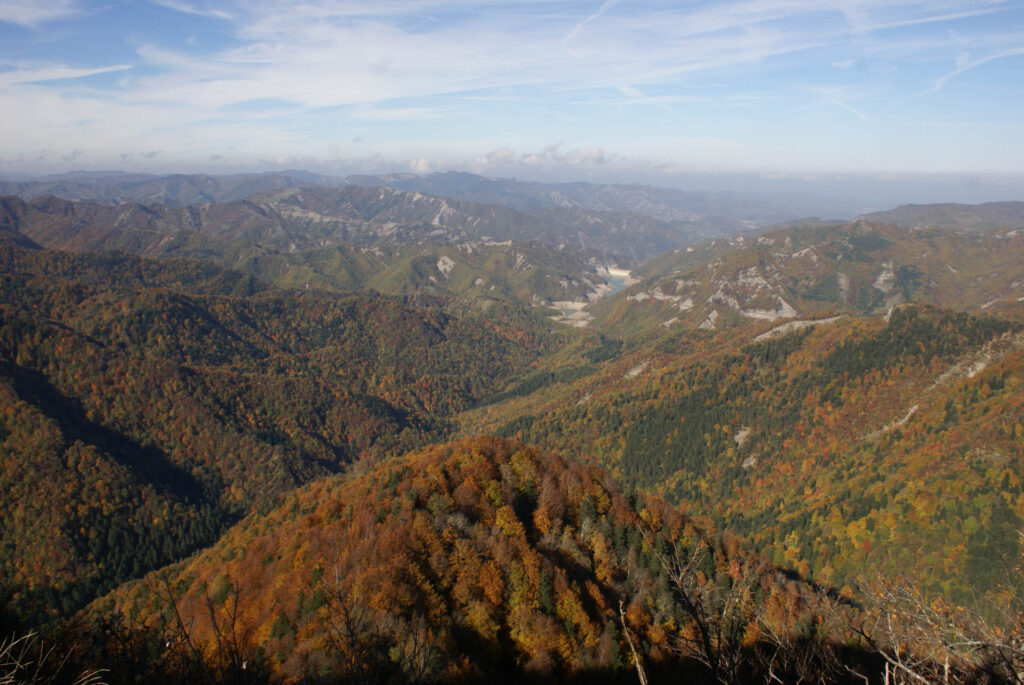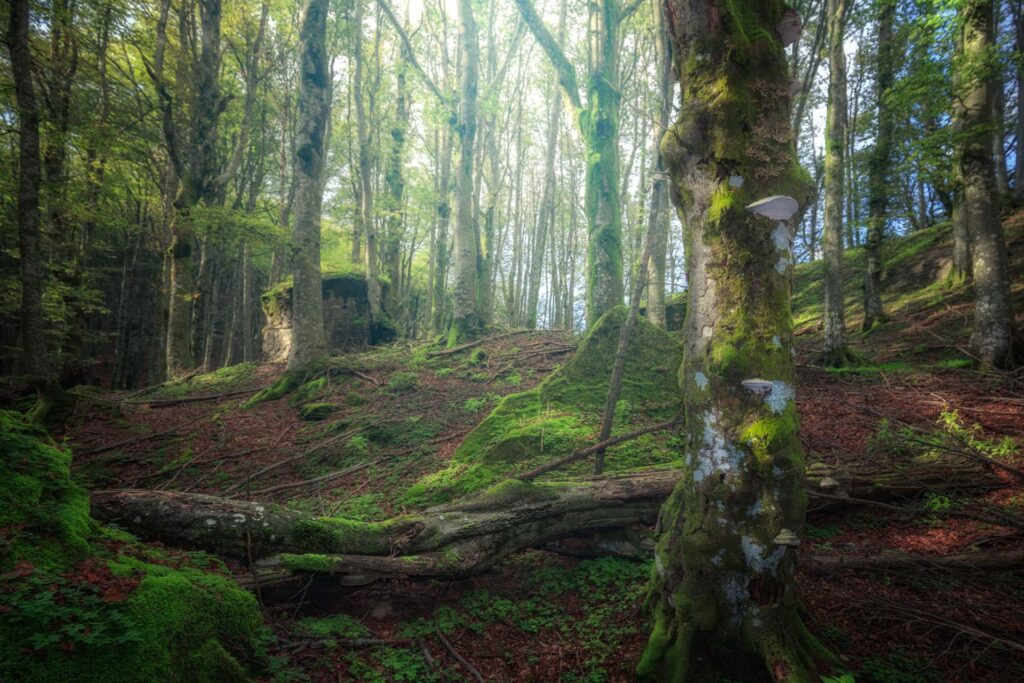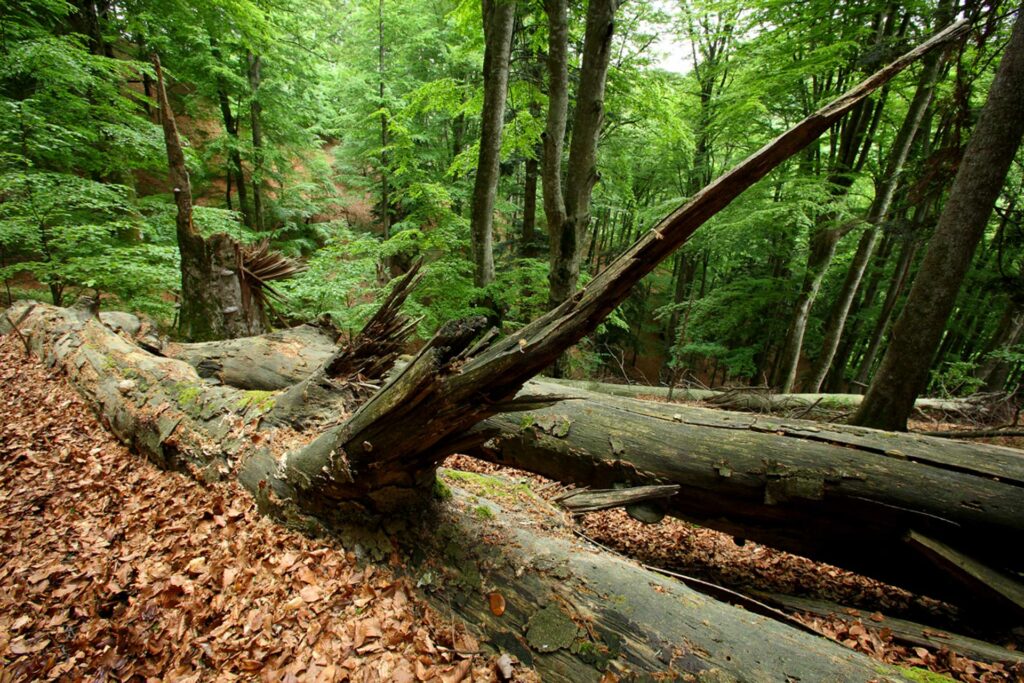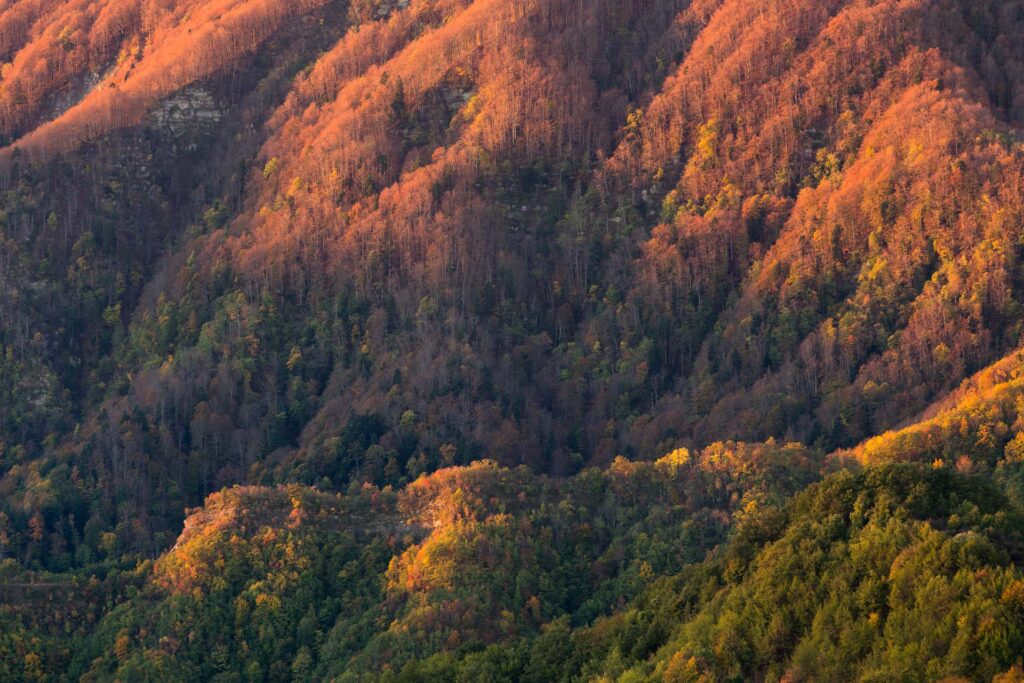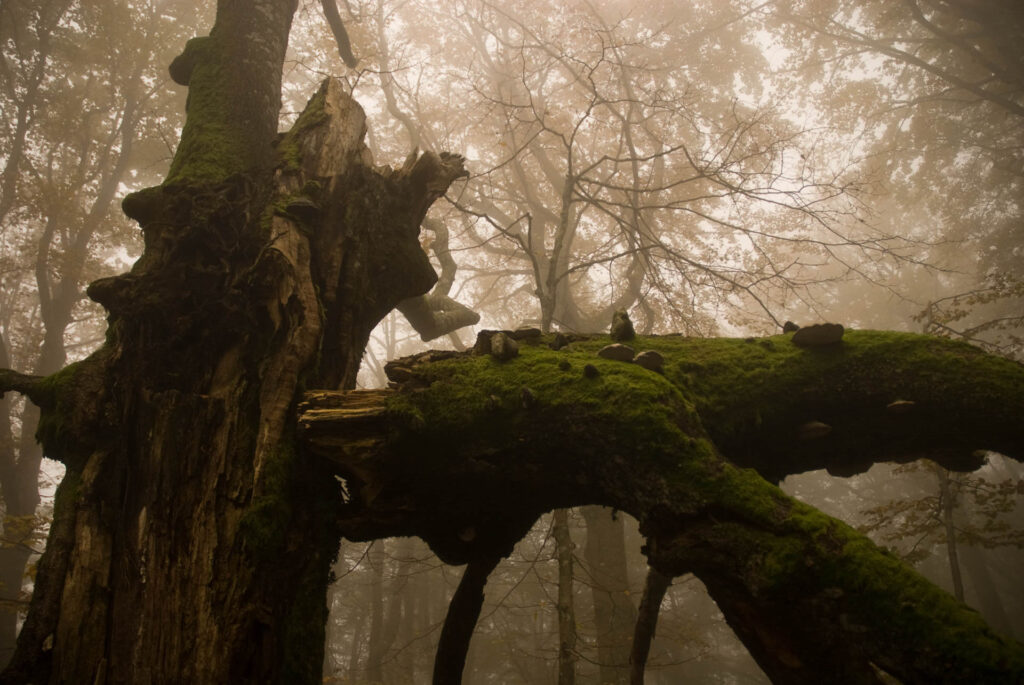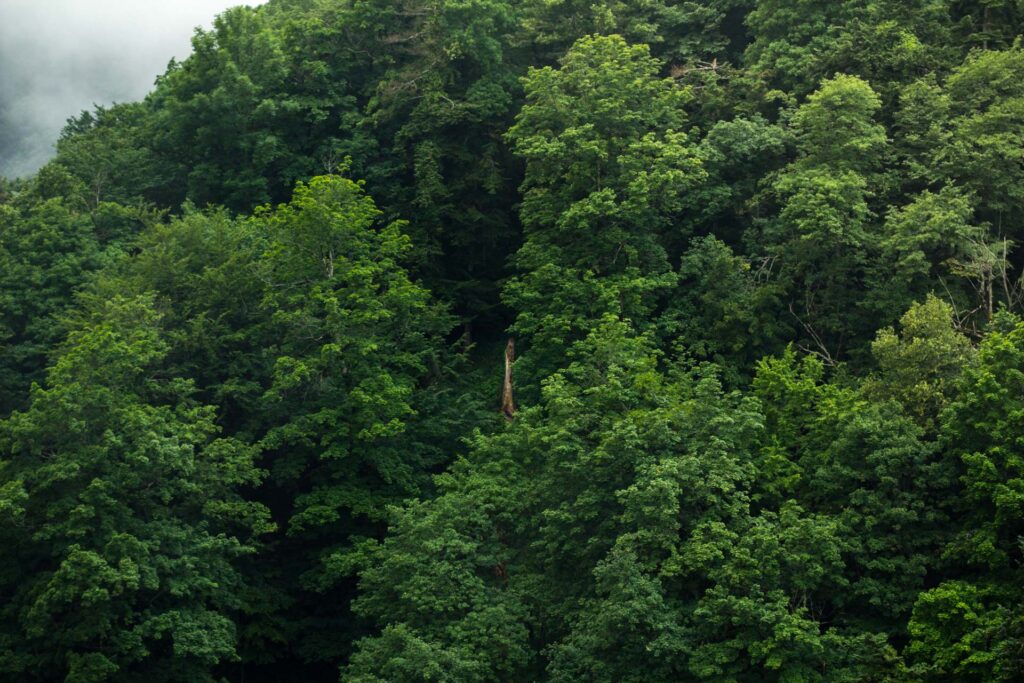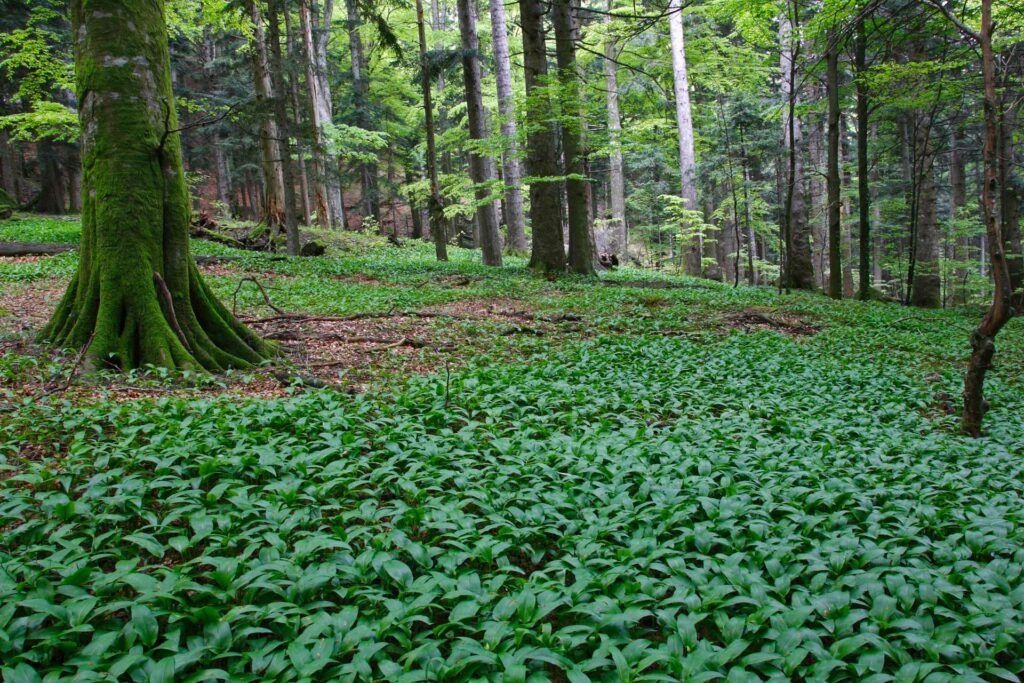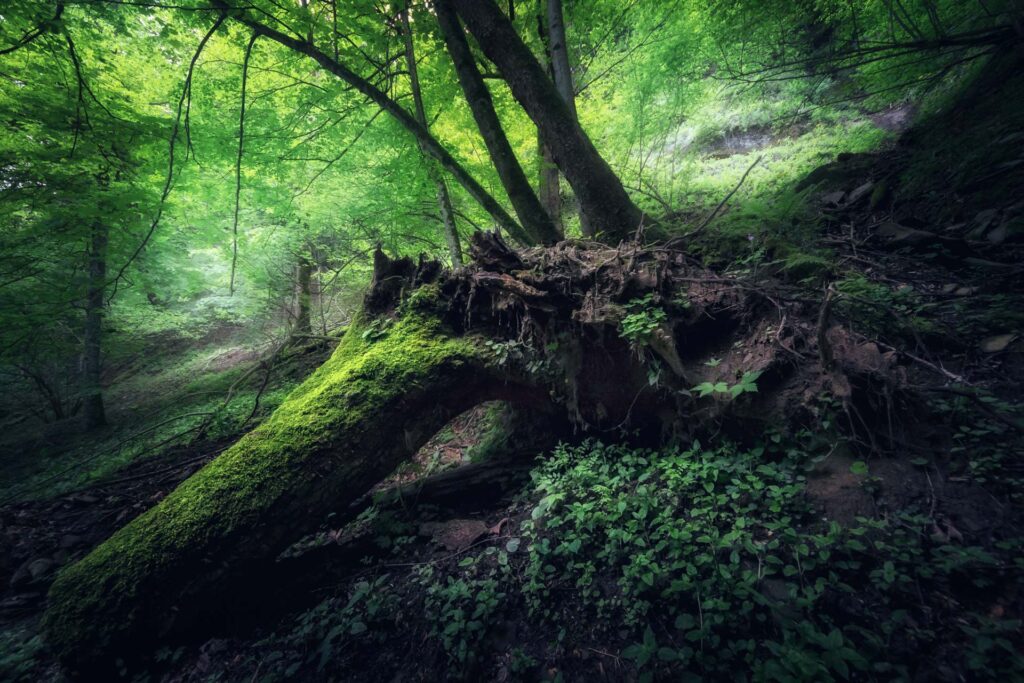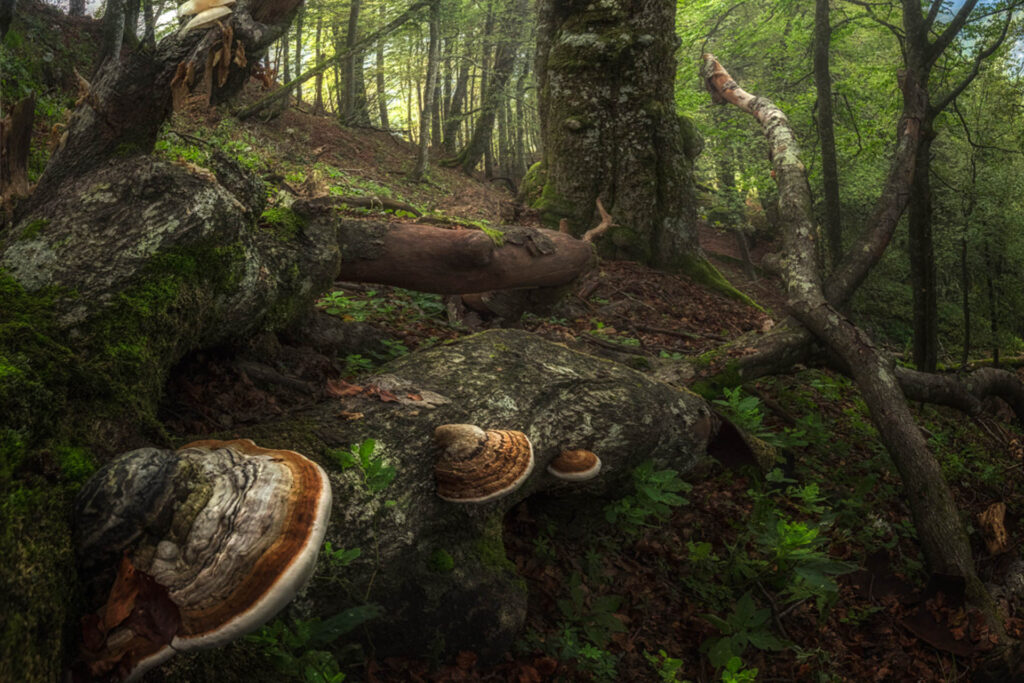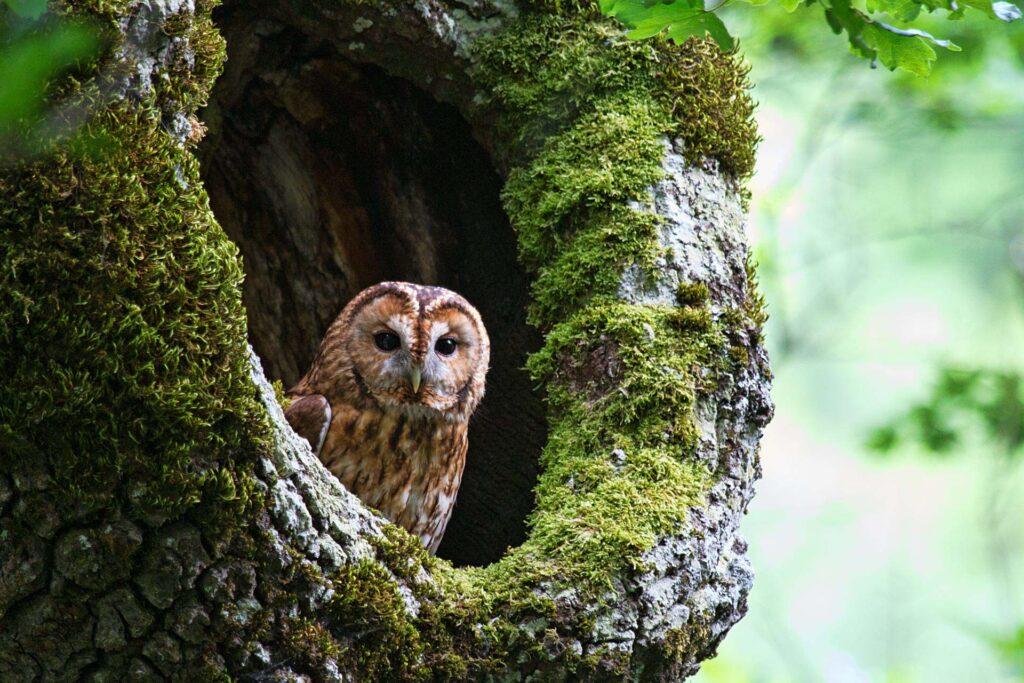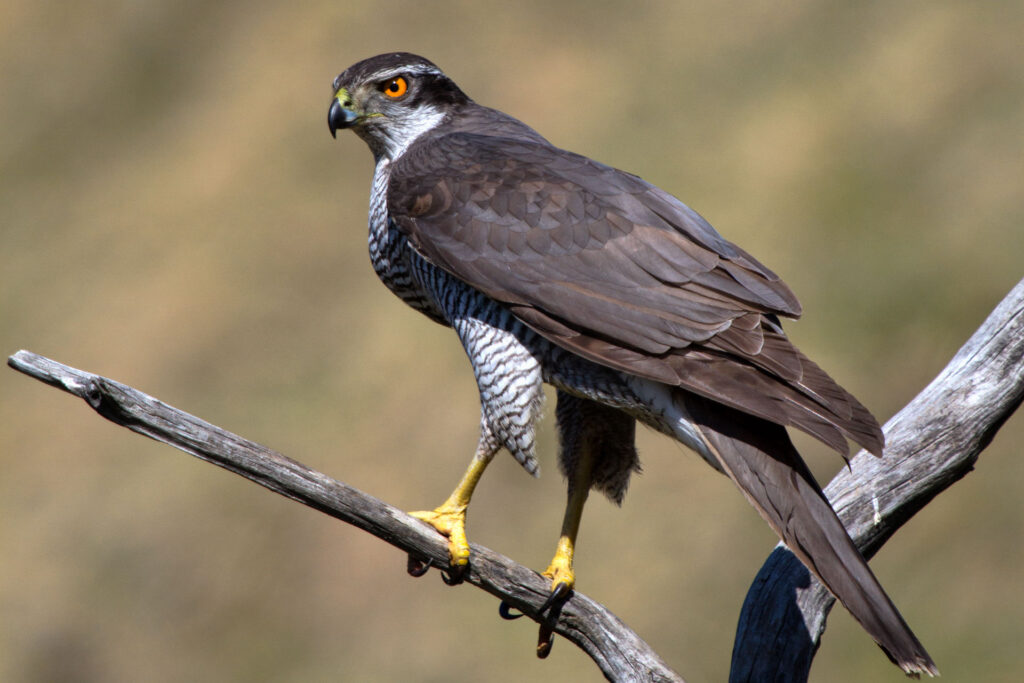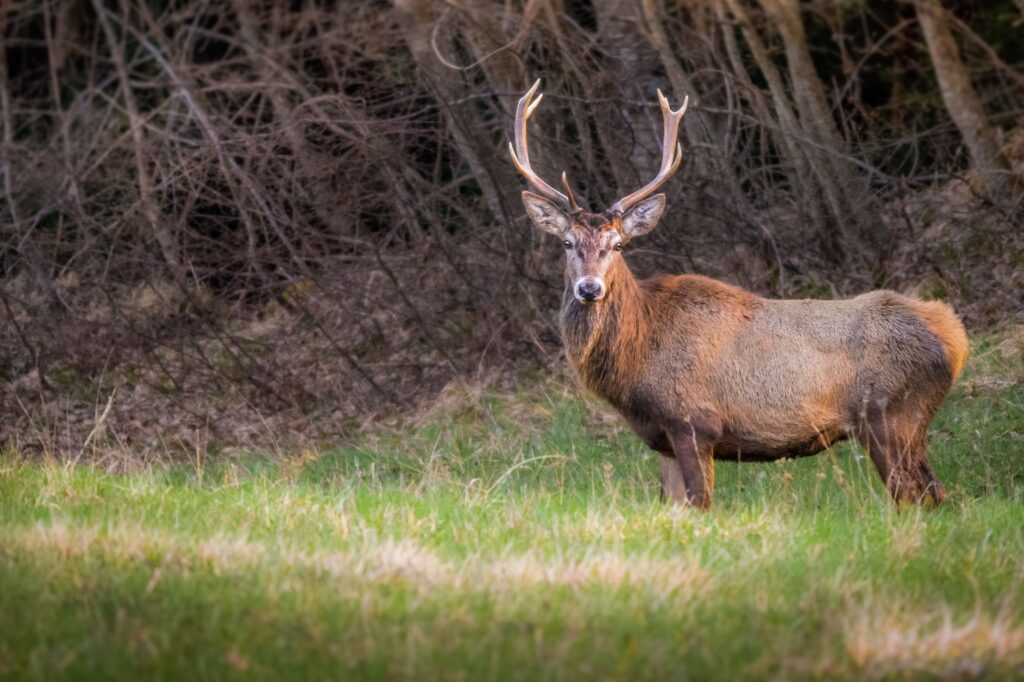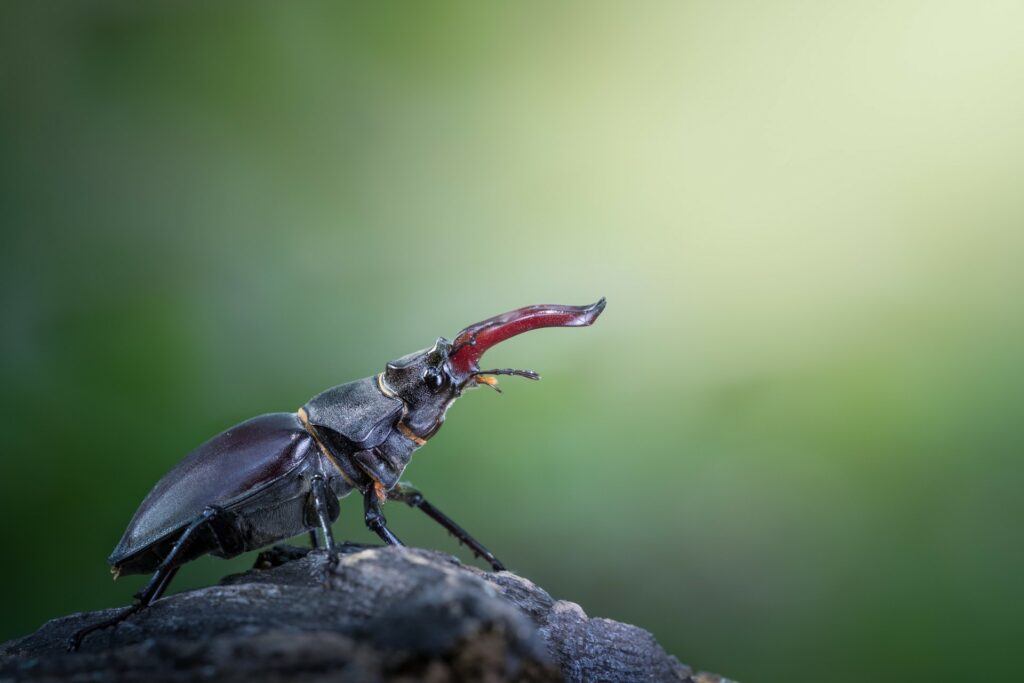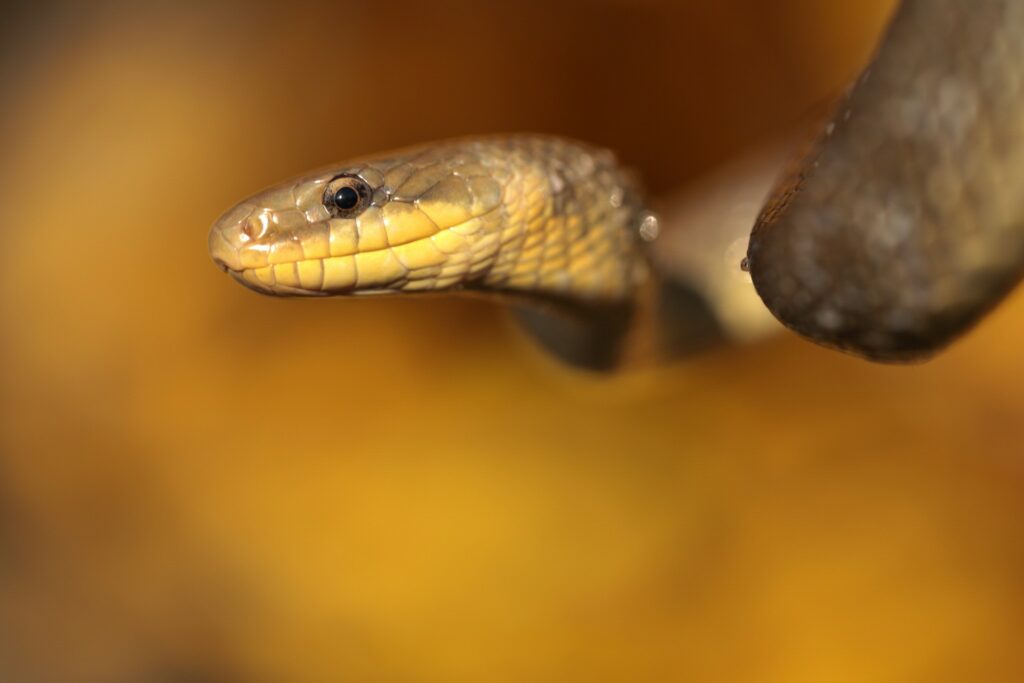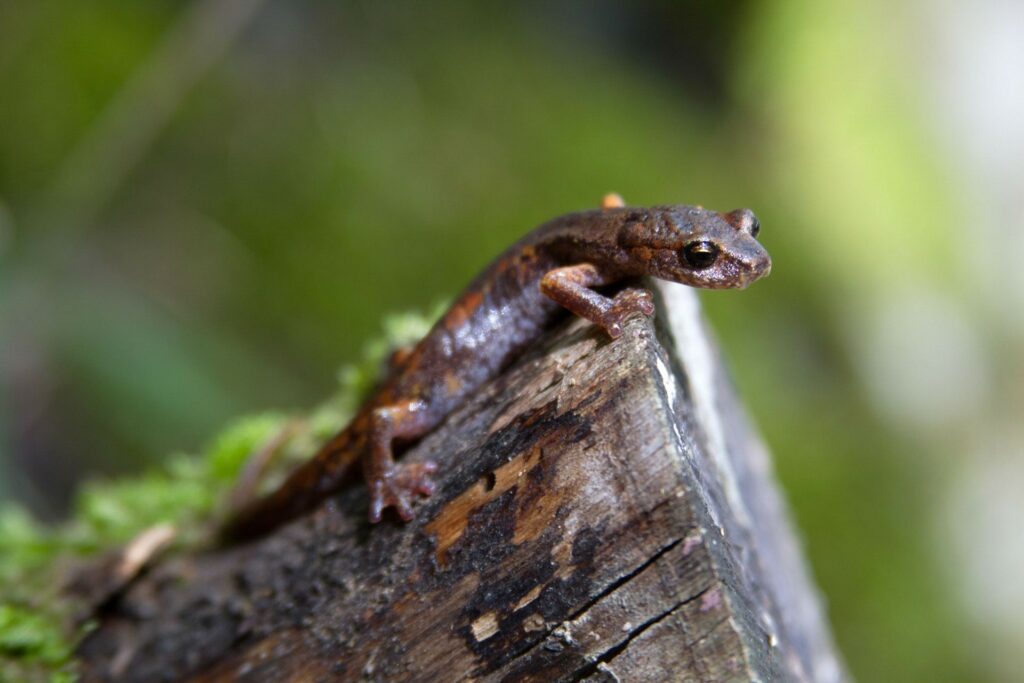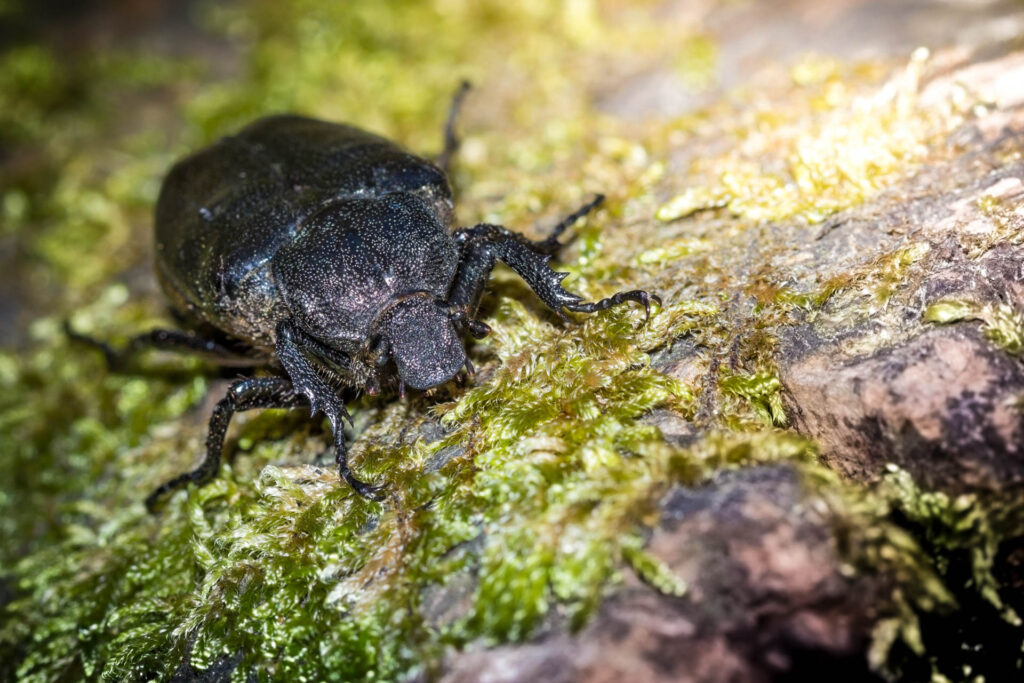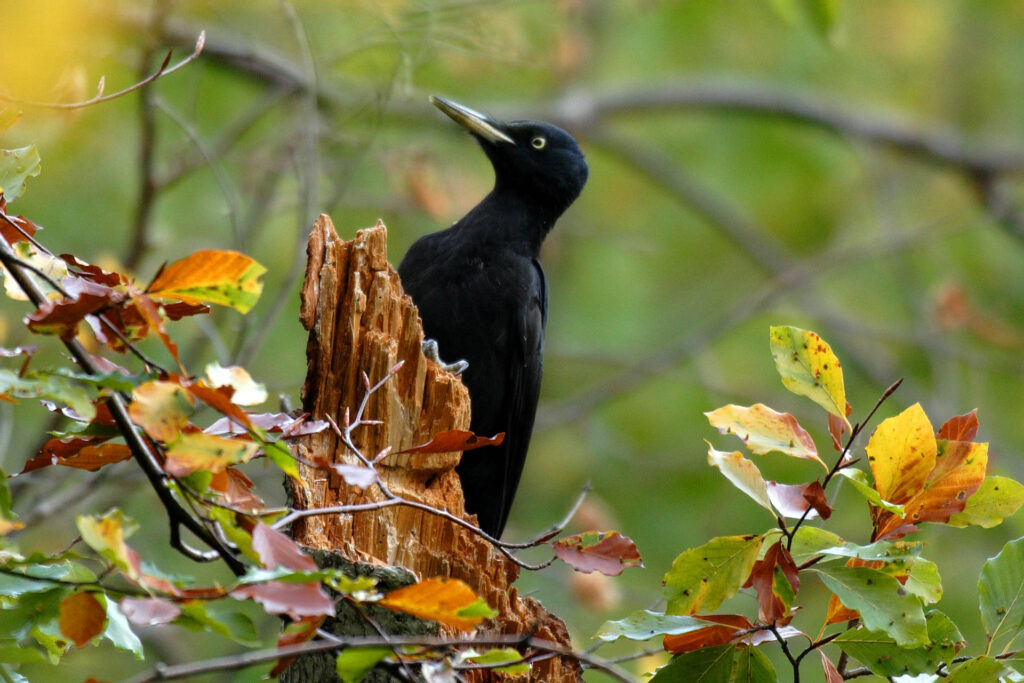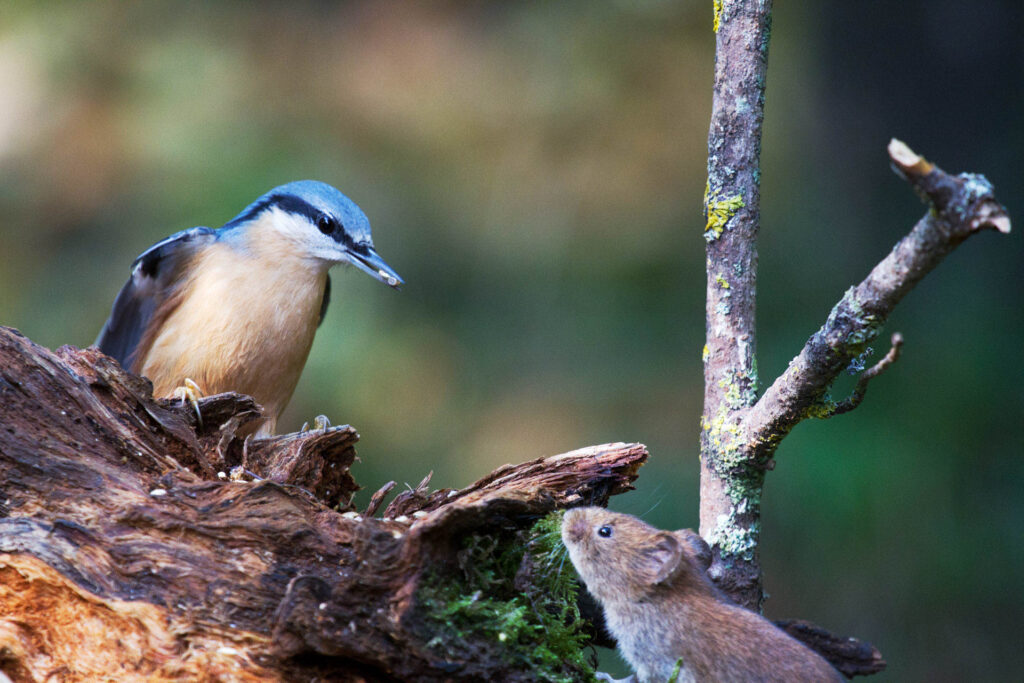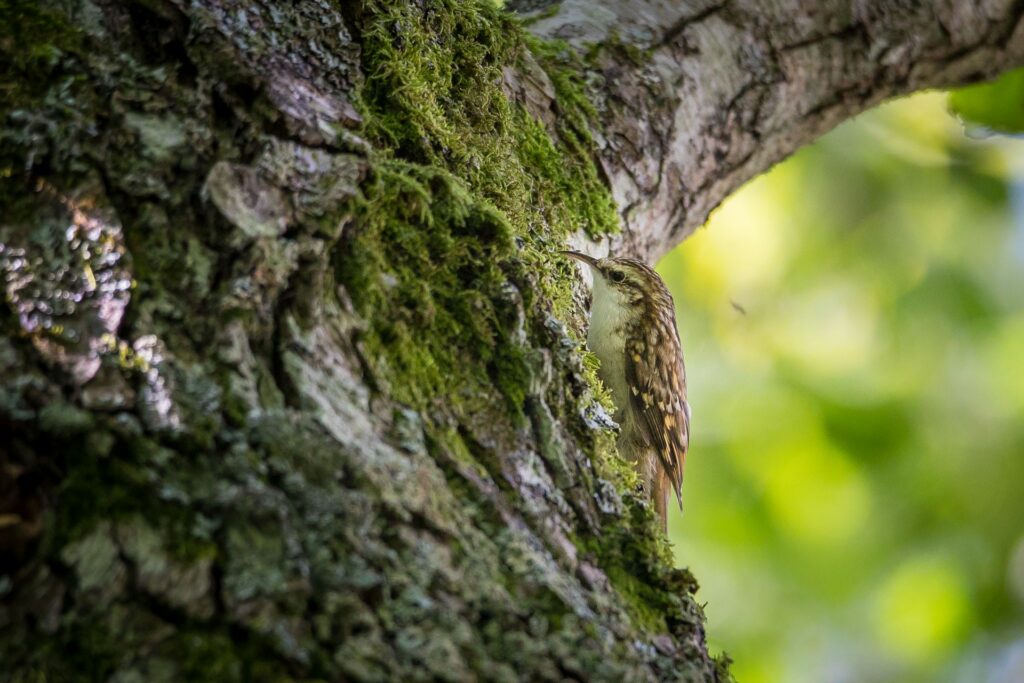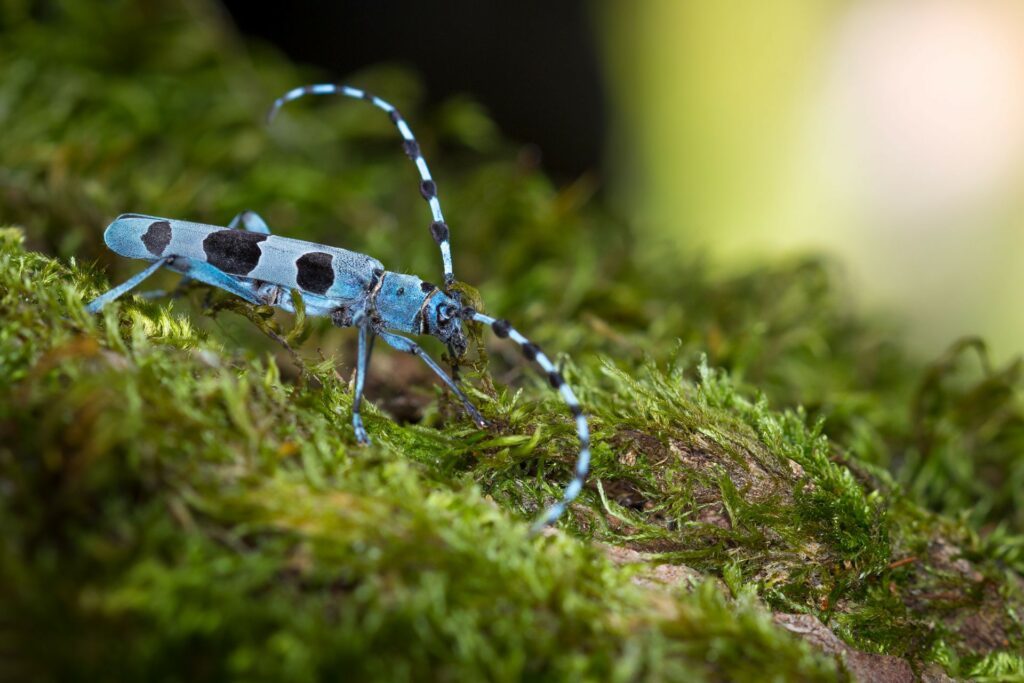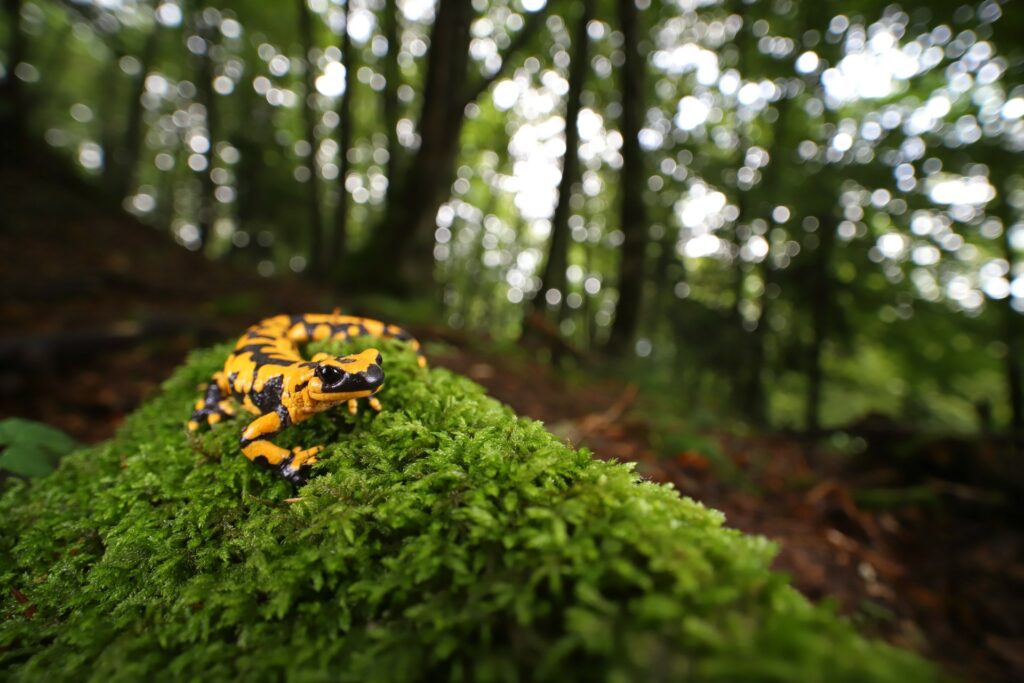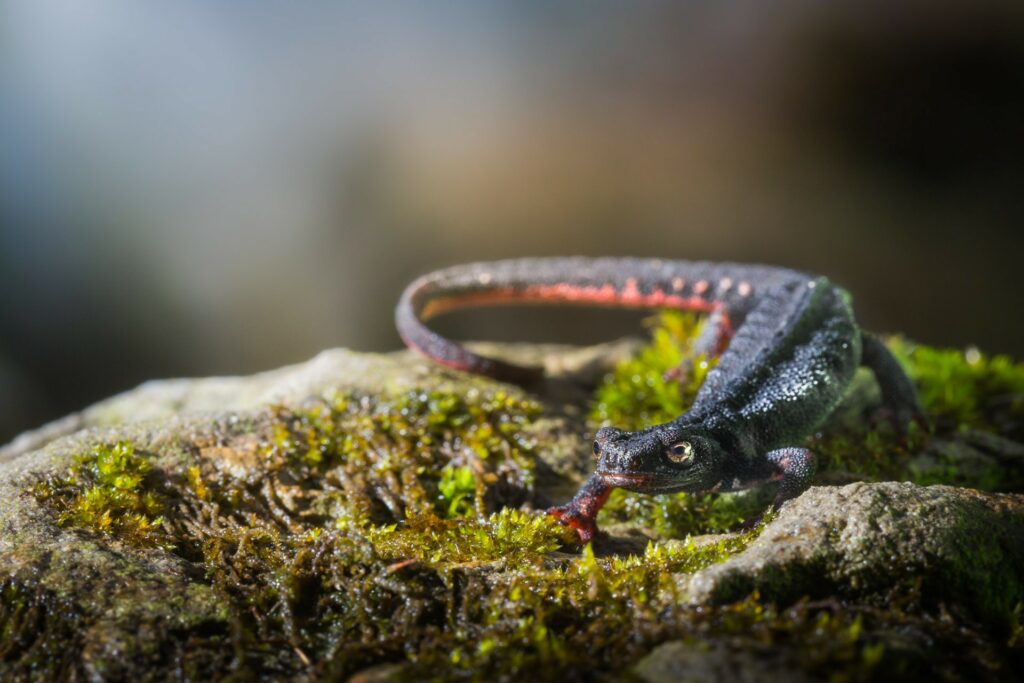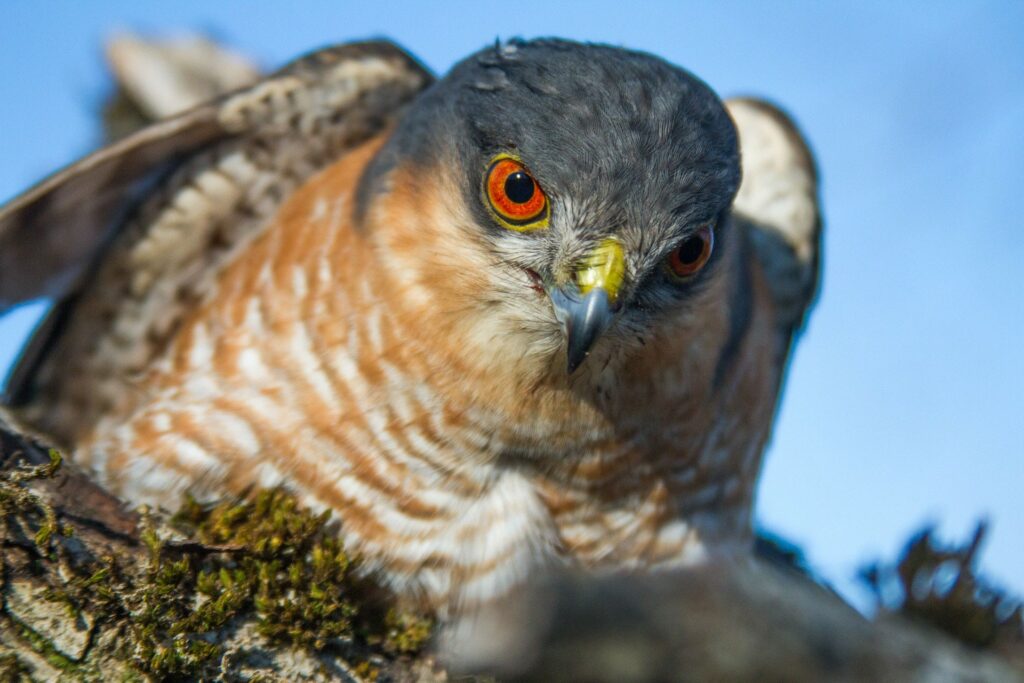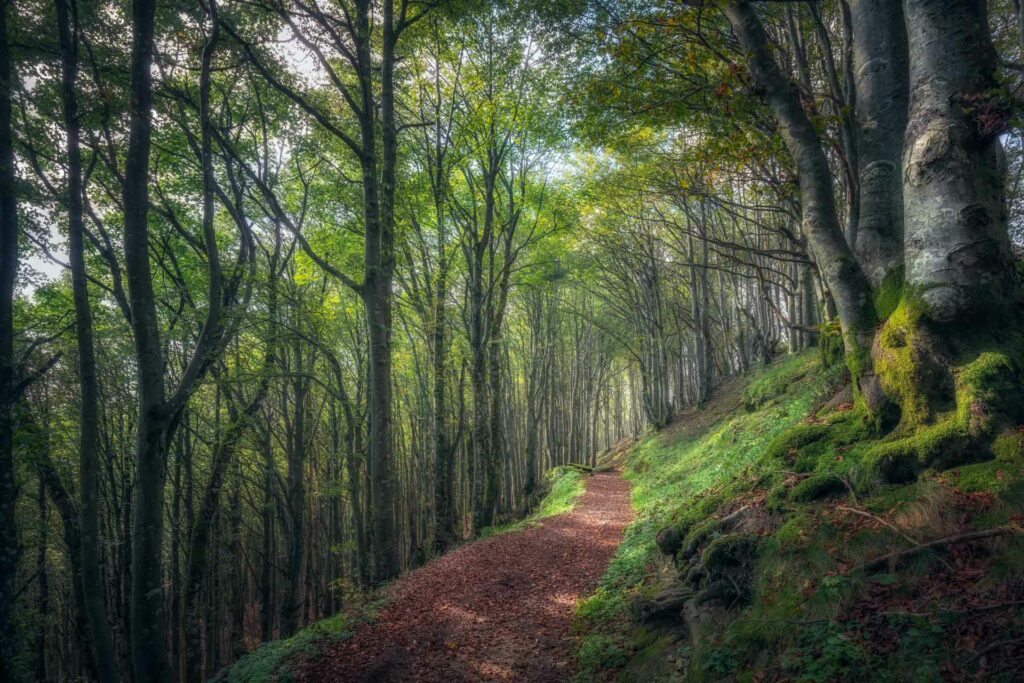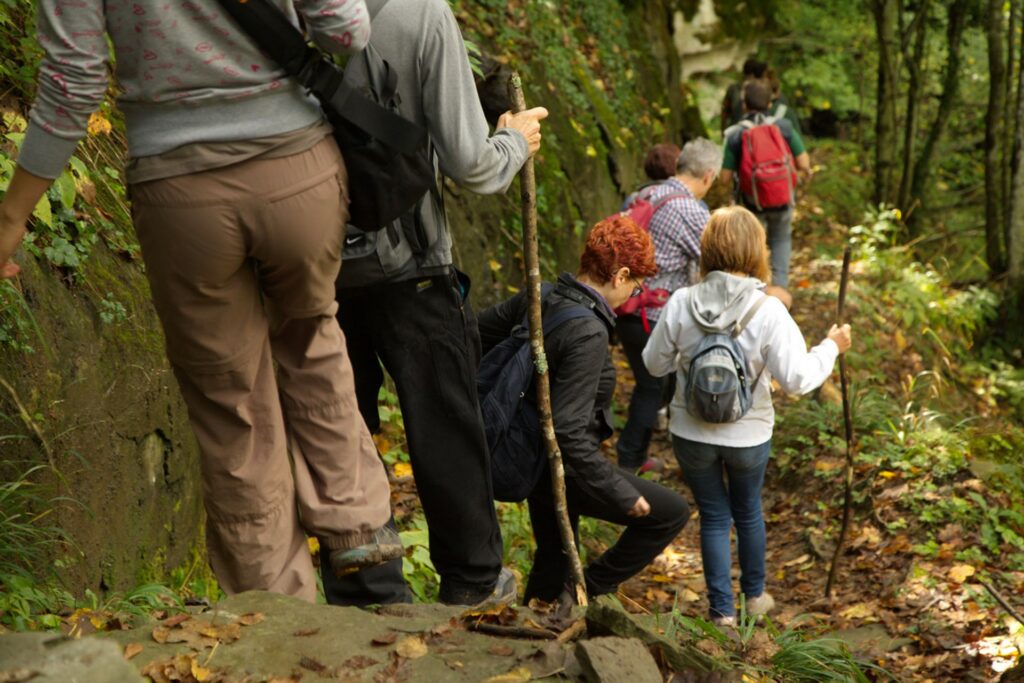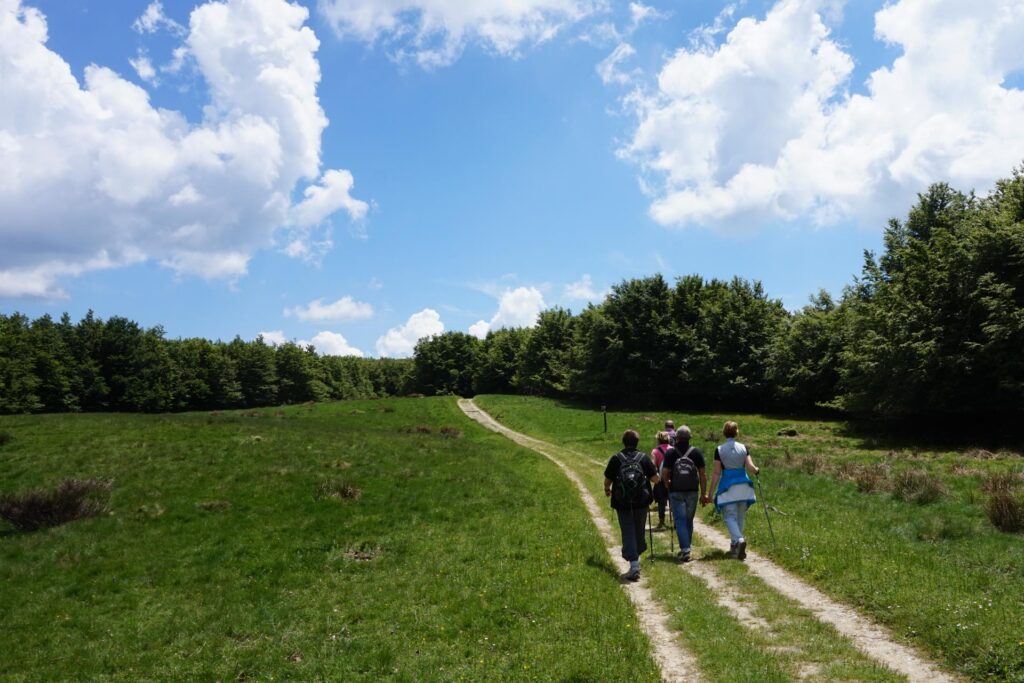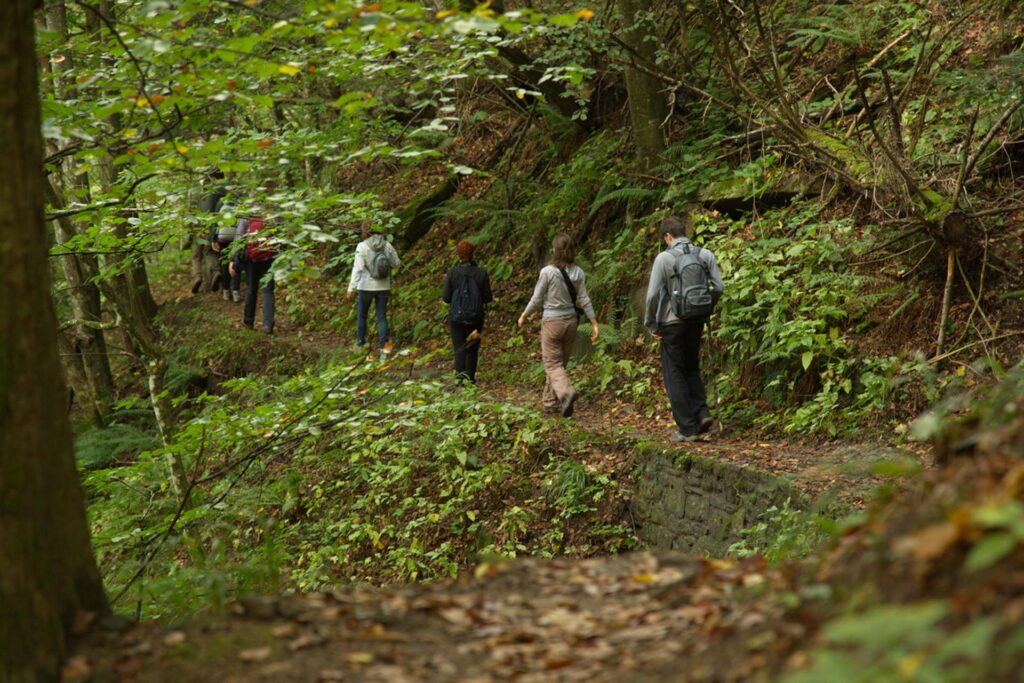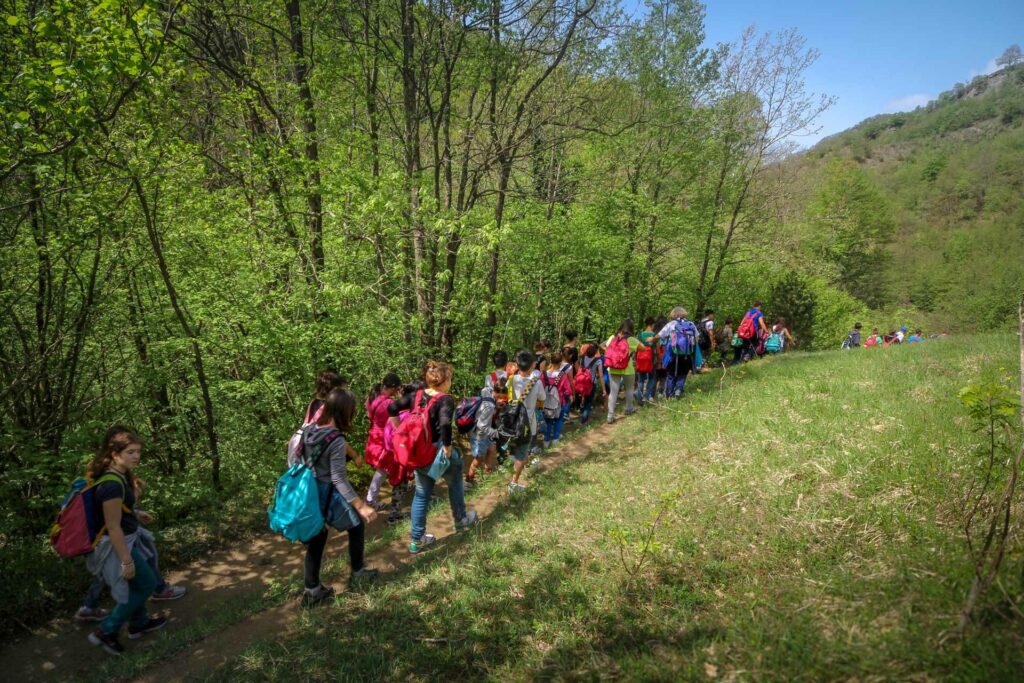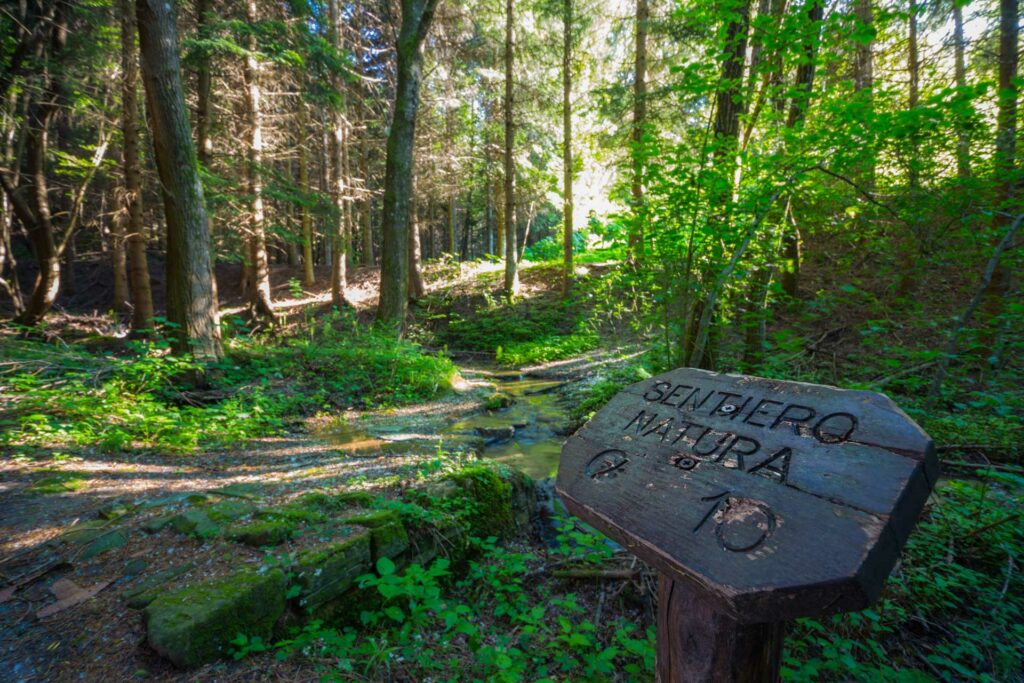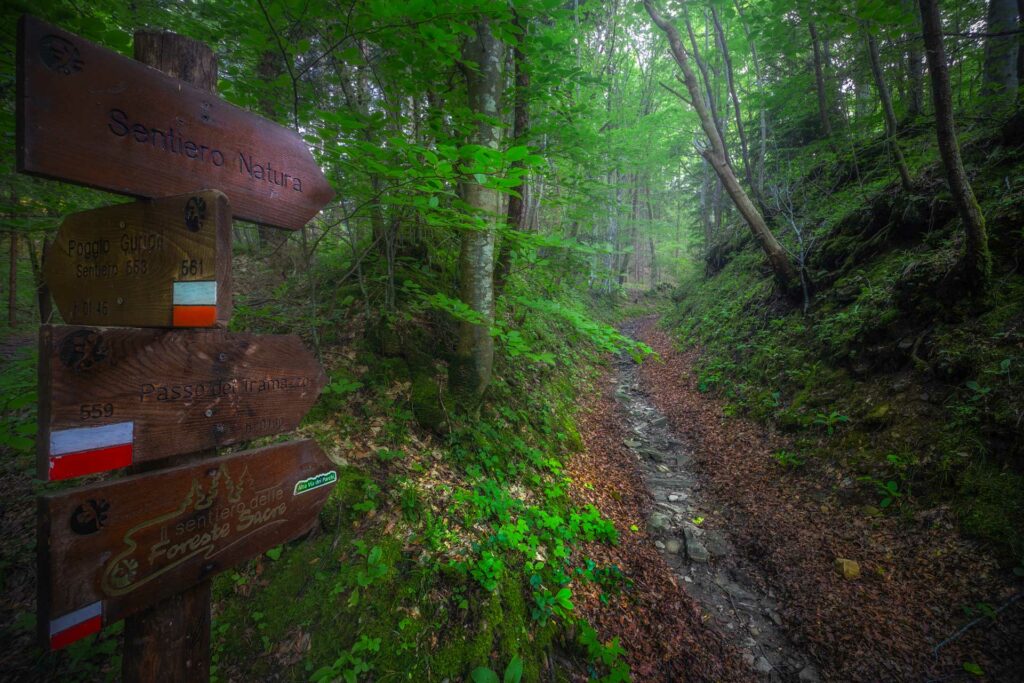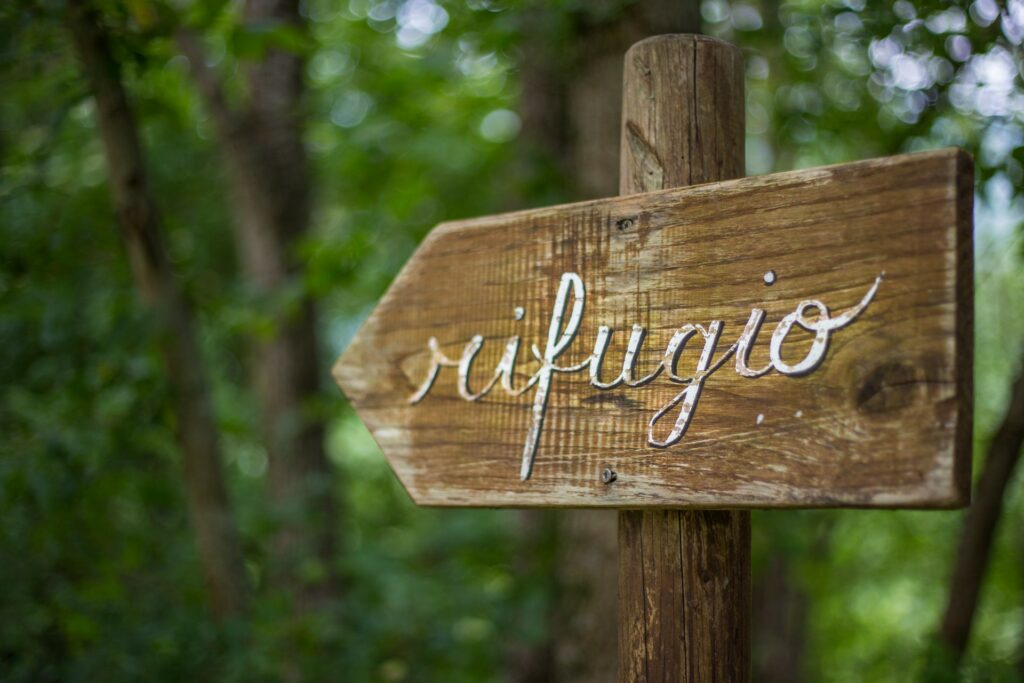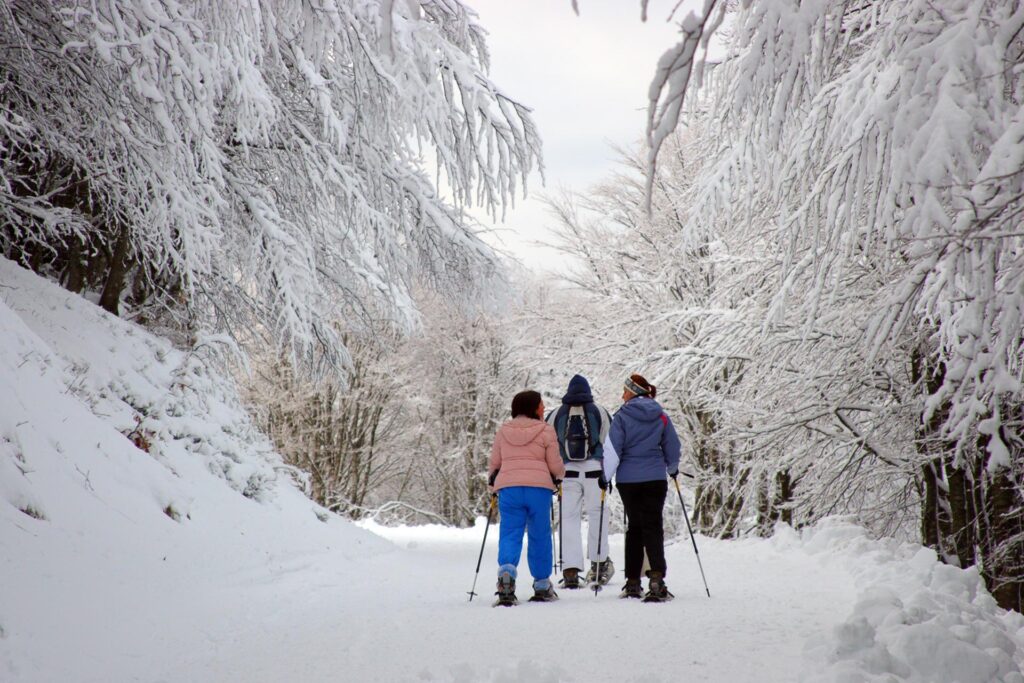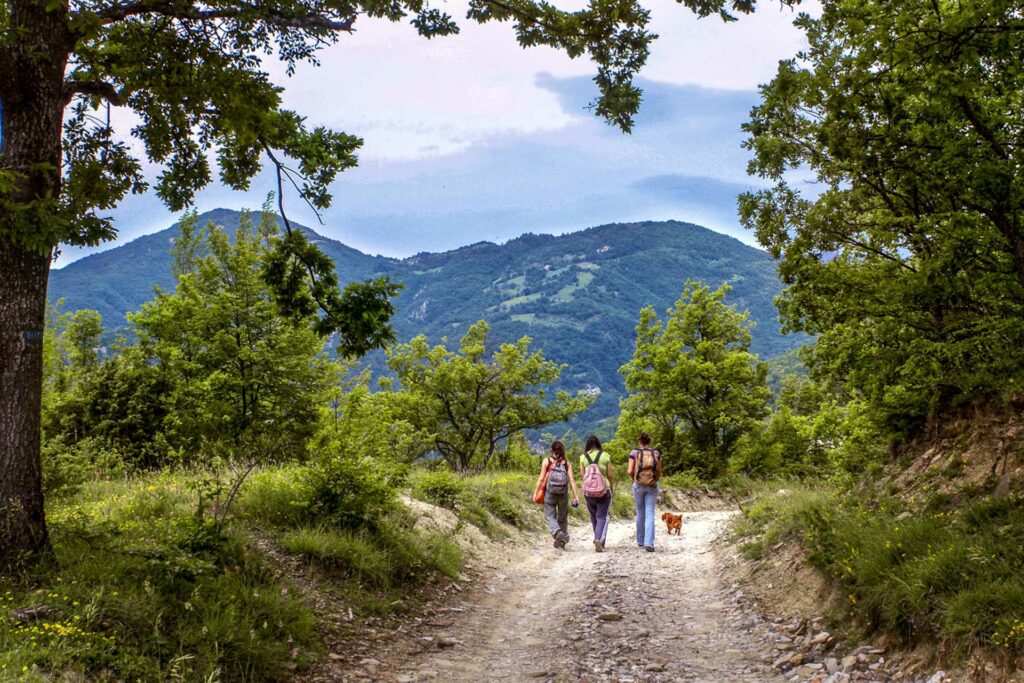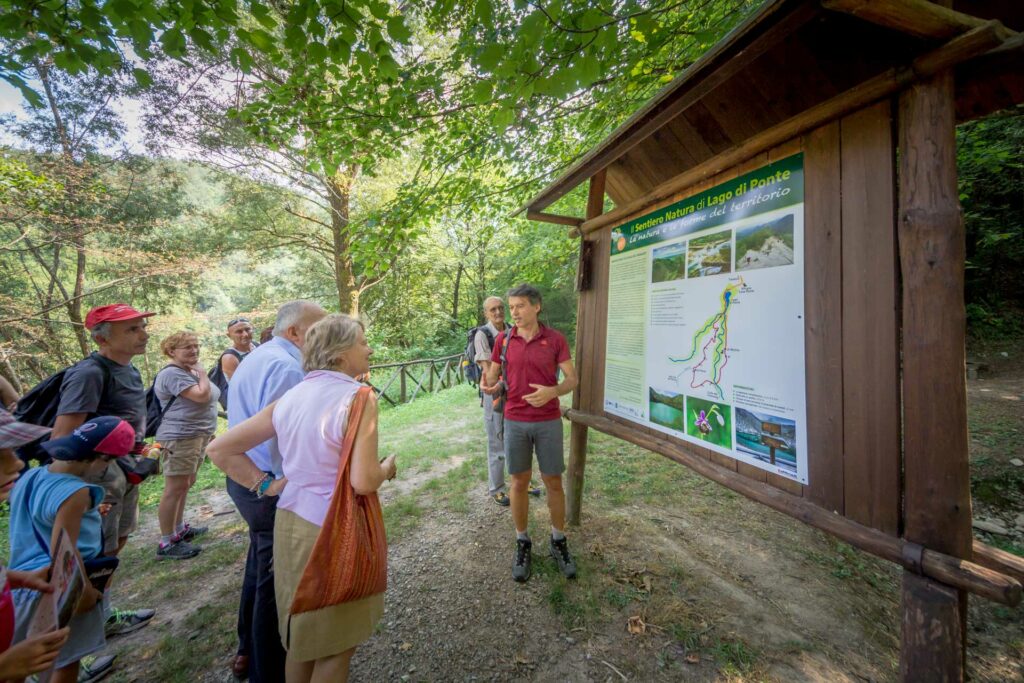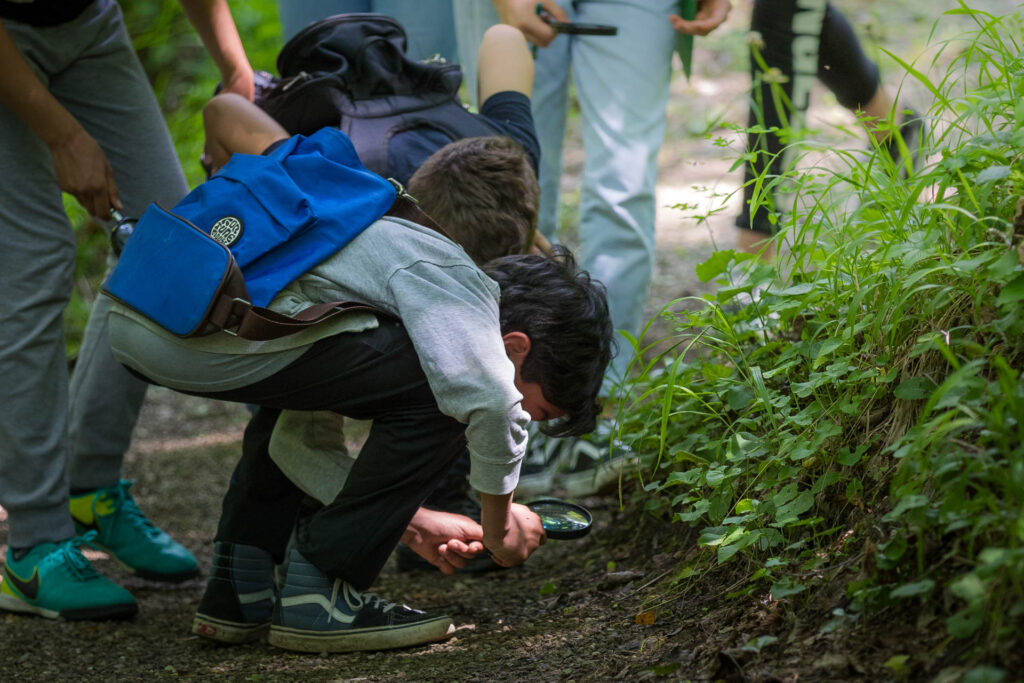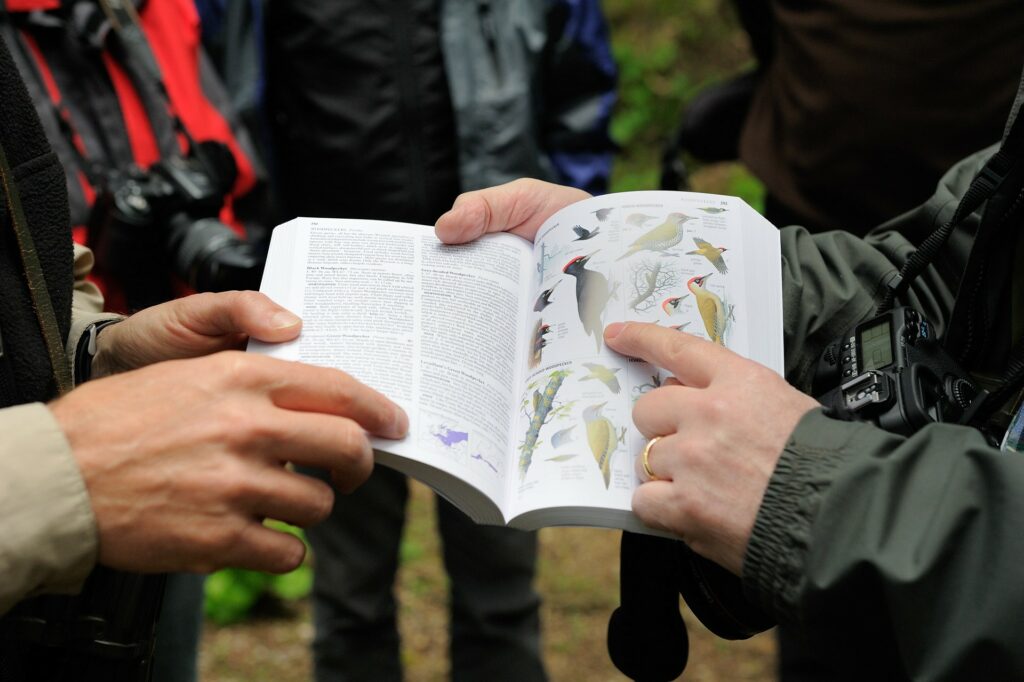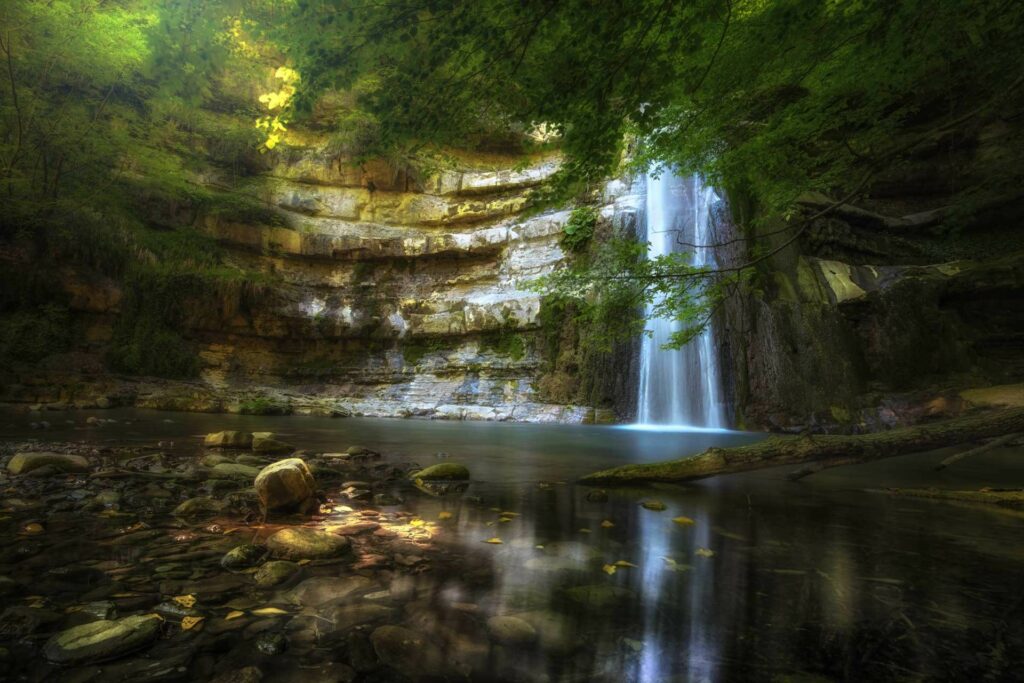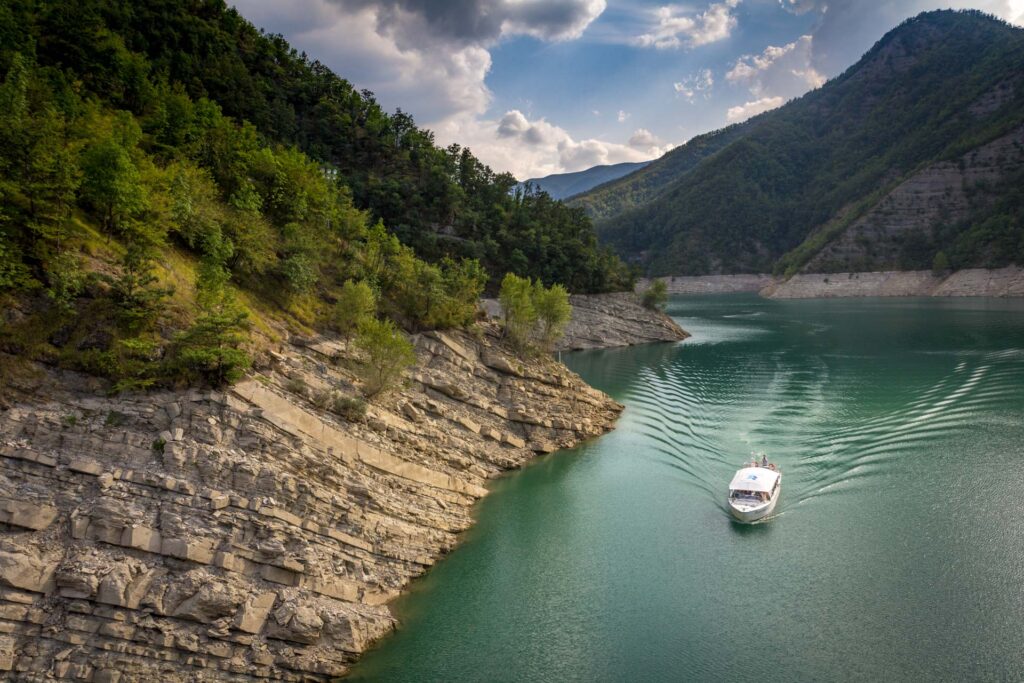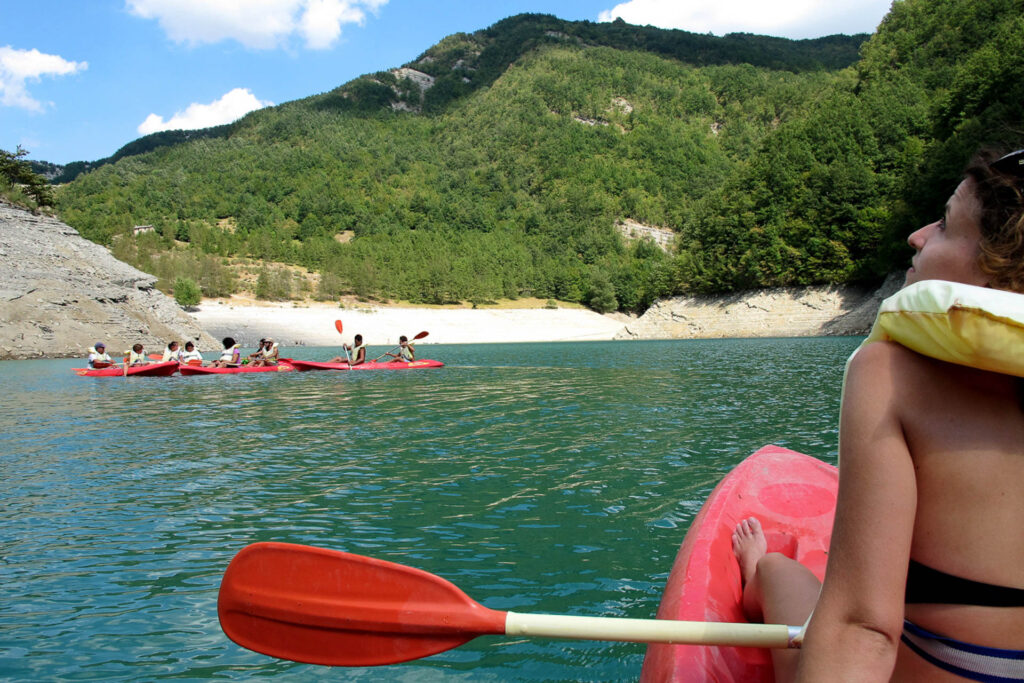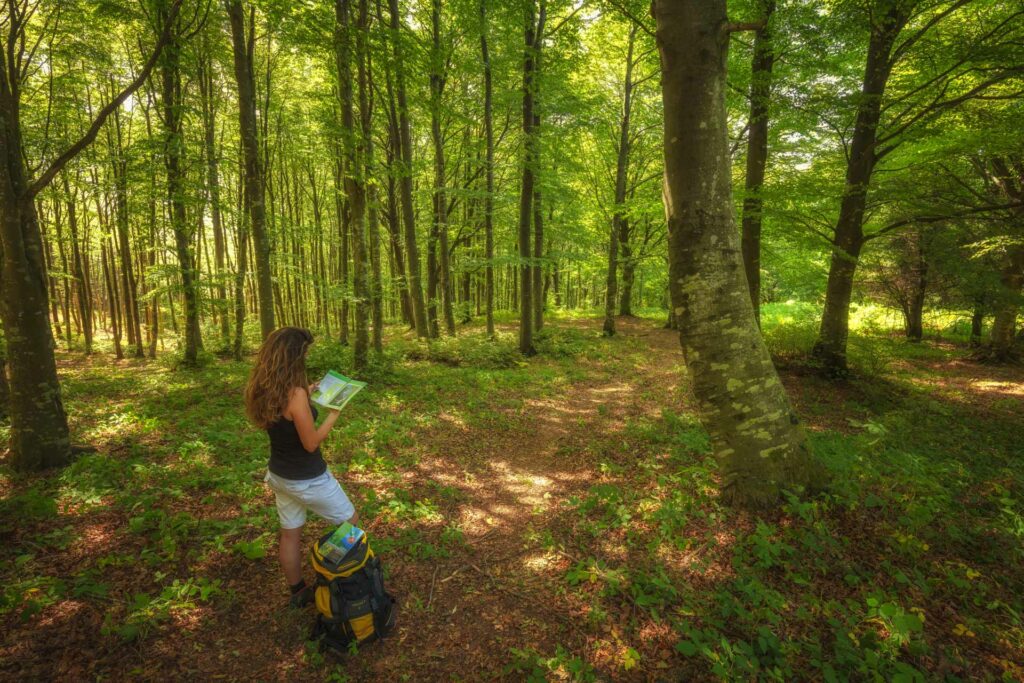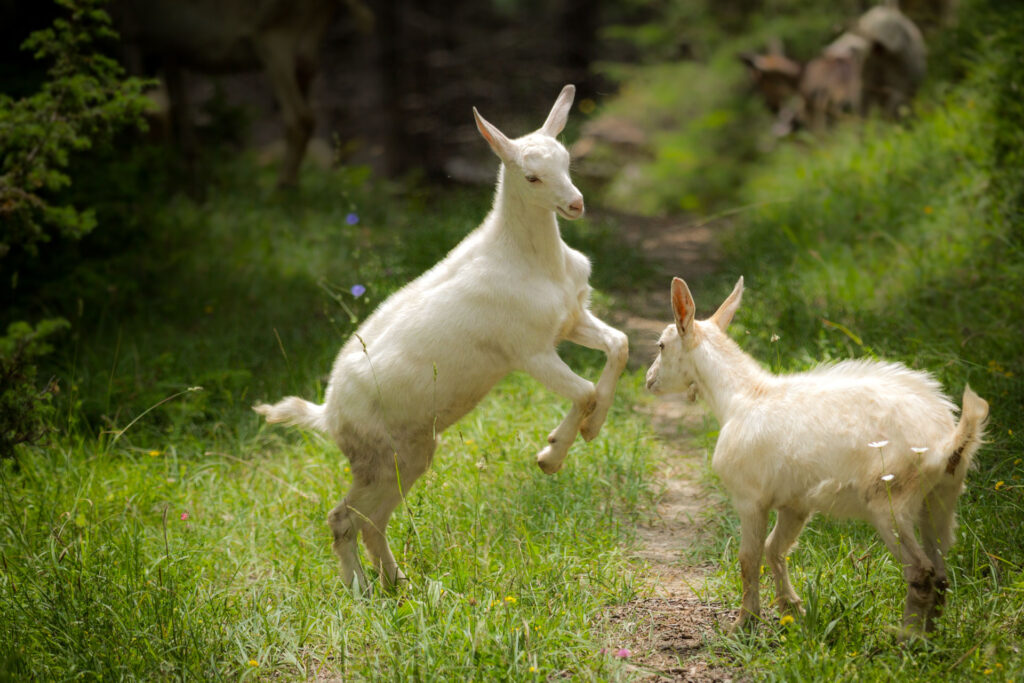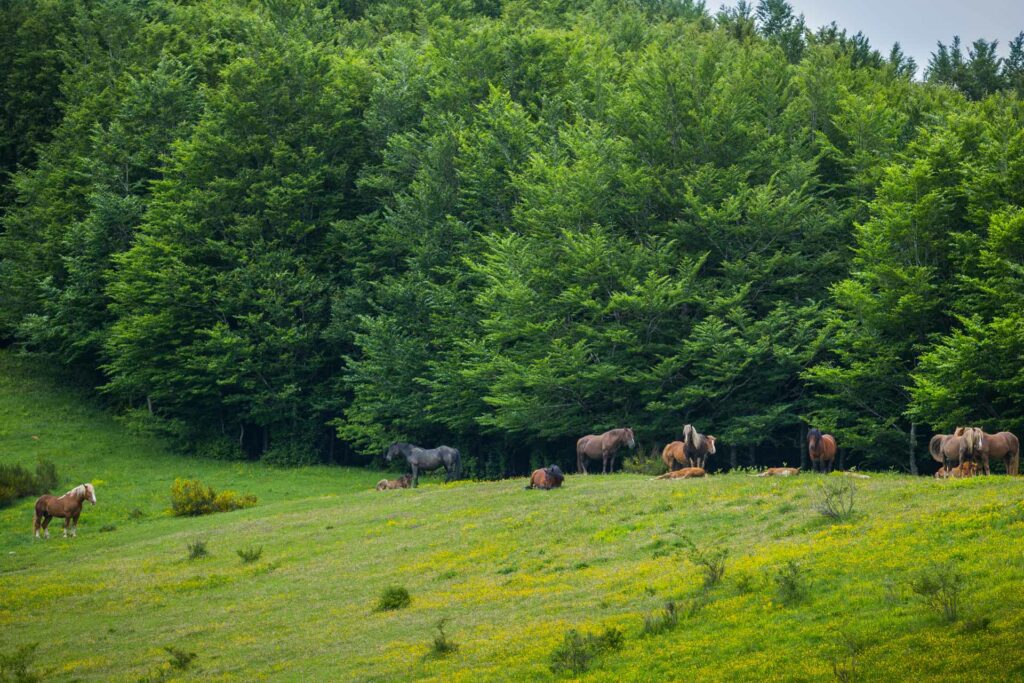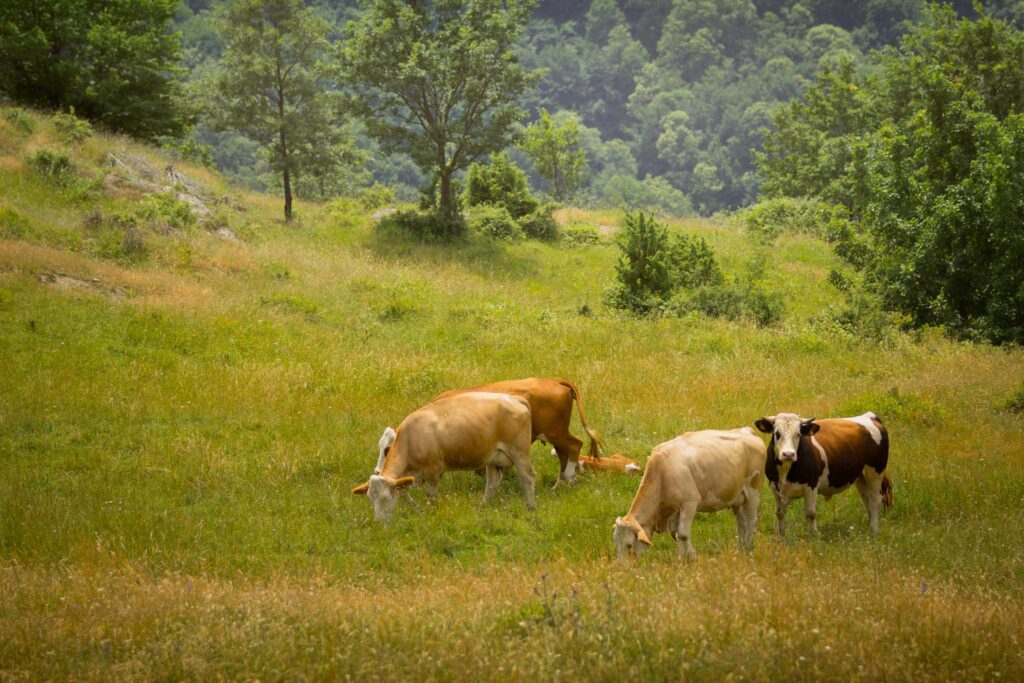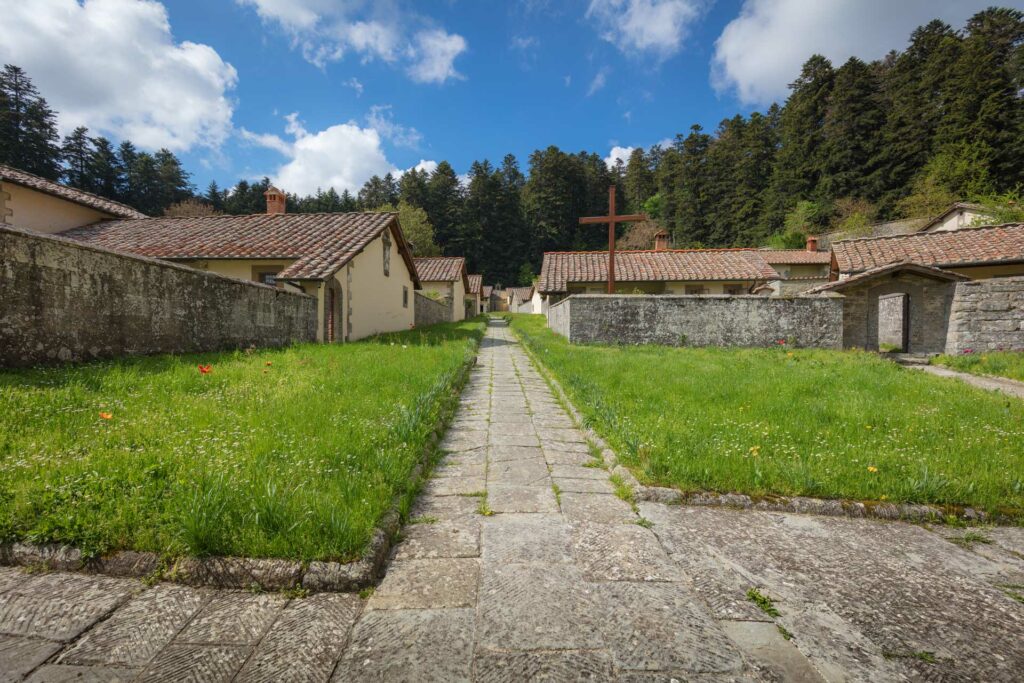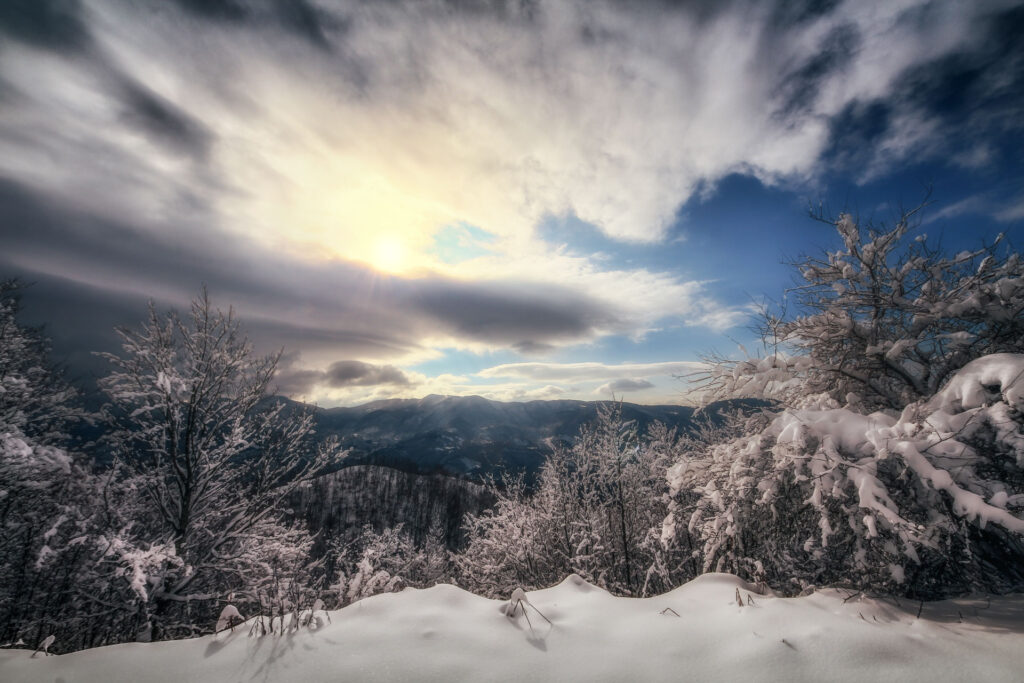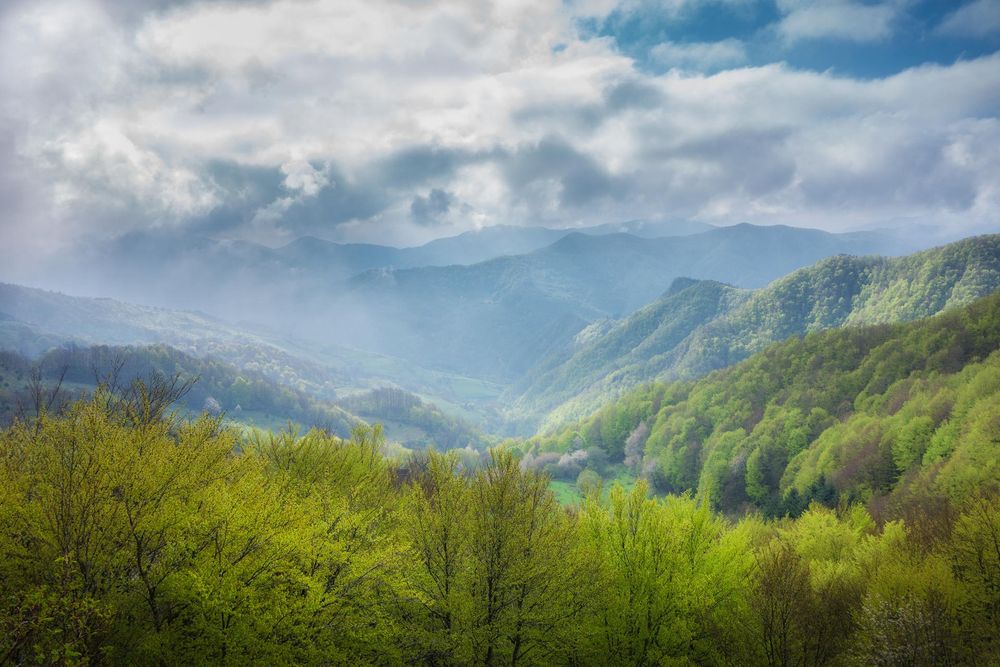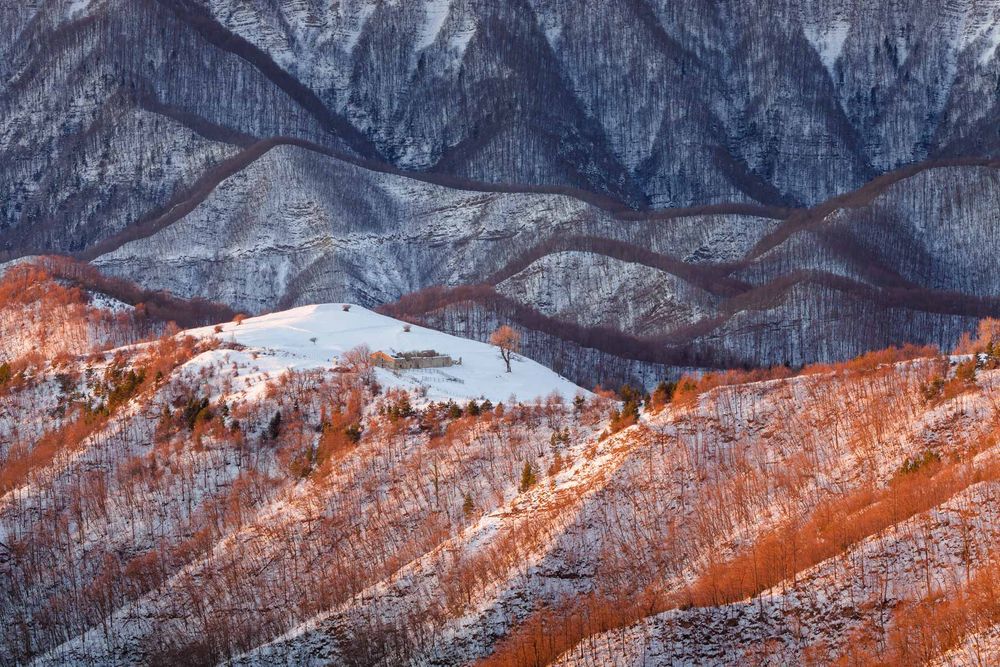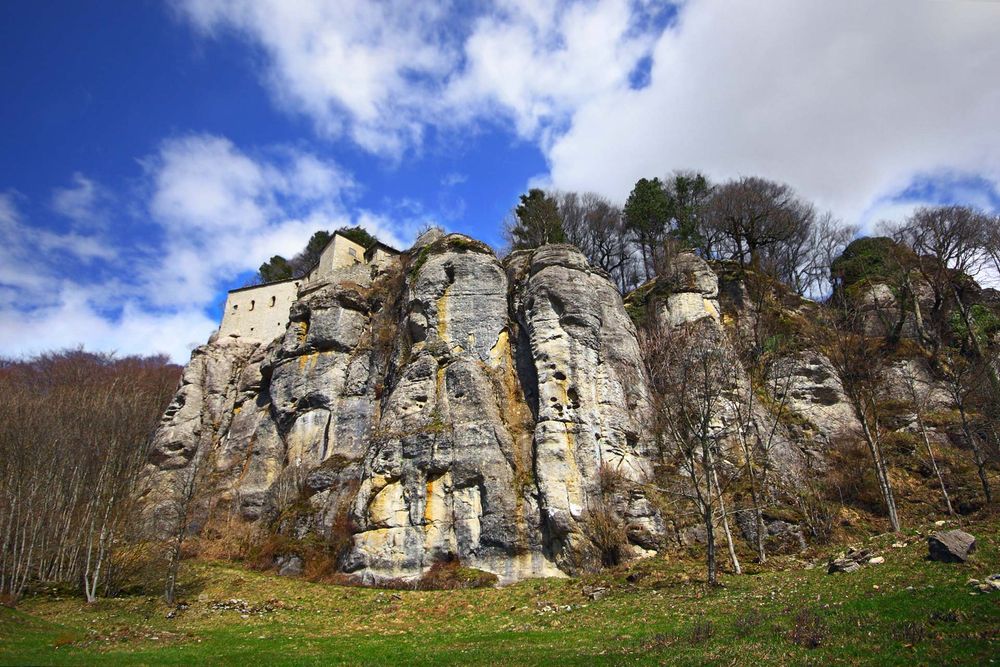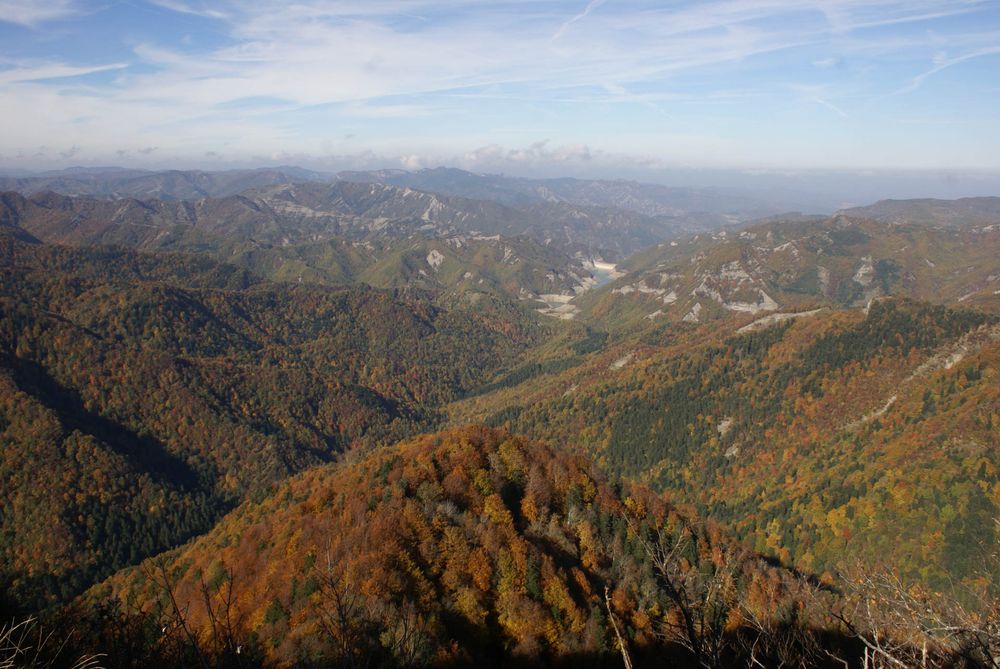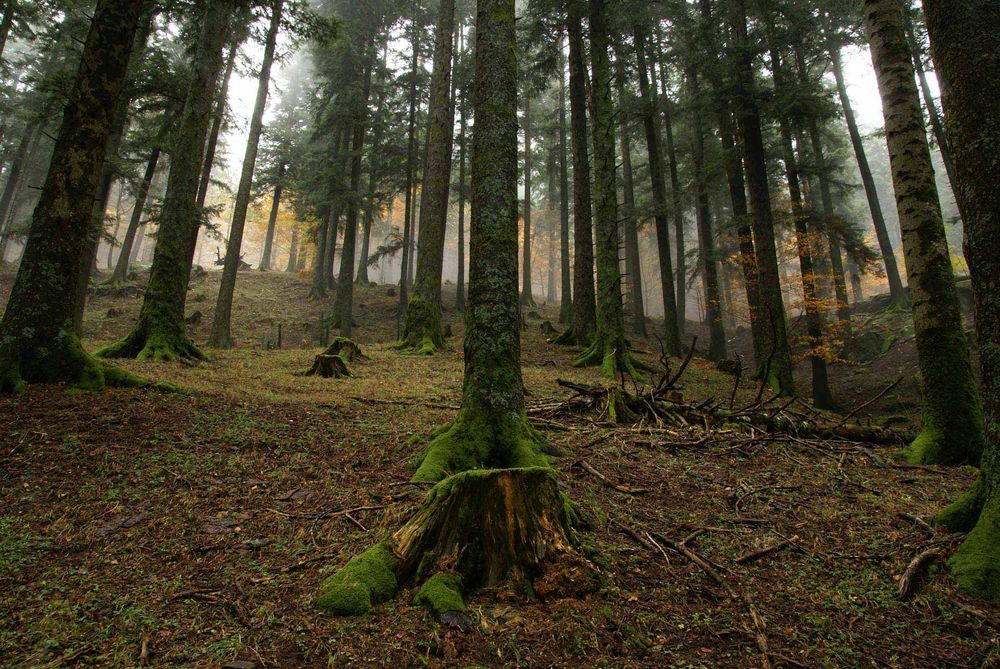Foreste Casentinesi, Monte Falterona and Campigna National Park
old-growth forest
than 500 years
Black Woodpecker
of 40 m of height
The area
The Strict Nature Reserve of Sasso Fratino was the first strict reserve to be established in Italy in 1959. It also received the European Diploma for Protected Areas in 1985 and became UNESCO World Heritage in 2017, together with a large surrounding buffer zone. The old-growth beech forests of Sasso Fratino and Casentinesi Biogenetic Reserves represent the heart of Foreste Casentinesi, Monte Falterona and Campigna National Park, one of the most valuable forest areas in Europe, located between Romagna and Tuscany.
Covering an area of about 36,000 hectares equally divided among the Regions of Emilia-Romagna and Tuscany, it involves the territories of the Provinces of Forlì-Cesena, Arezzo, and Florence and straddles the Tosco-Romagnolo Apennine, descending steeply towards the parallel valleys on the side in Romagna and more gradually – with gentler slopes – on the side in Tuscany, to reach the wide valley floor formed by the River Arno. The landscape is characterized by sedimentary rocks, mainly sandstones alternating with marls, which can be frequently seen in characteristic stratified slopes or on bare ridges in Romagna. The Park also includes the monumental forest surrounding the Franciscan Sanctuary of La Verna, as well as many other areas – not only forest areas – of high nature value.
If you reach these places from the rough and wild valleys of upper Romagna, or following the River Arno along the Casentino valley floor – full of history and art – or the impressive valley of the stream Falterona on the slope of Florence, the Park will give you the chance to discover fascinating locations without abandoning the lush and thriving green mantle covering almost its whole surface area.
The territory includes villages rich in history, where the relationship with man has ancient roots documented since the year 1012, when Saint Romuald founded the Camaldolese Order: in fact, the monks of the Order preserved and maintained this heritage for centuries, following the rules of the famous Camaldolese Forest Code, an evidence of the connection between spiritual research and forest management.
Besides, in May 1213, Count Orlando Cattani from Chiusi in Casentino donated the mountain of La Verna to Saint Francis of Assisi. The event marks the beginning of the story of one of the most mystical places in the Occident, where Saint Francis received the stigmata during the Lent of 1224. Today, the calcareous cliff of Monte Penna is covered by a forest whose rich variety has been preserved by almost eight centuries of management by the Franciscan monks, who considered the woods as part of the Creation through which the work of God manifested itself and, as such, a place to respect and venerate.
Thus, the Park represents an area where man has always lived and worked: this is the reason why its territory is scattered with several ruins and abandoned villages. Due to the massive exodus starting in the post-World War II period, the Park is currently populated by approximately 1,500 inhabitants. If on the one hand the abandonment has led to the disappearance of a whole Apennine civilization together with its ancient cultural heritage, its traditions and way of life, on the other hand it has made way for luxuriant forests and a rich biodiversity.
The forest
«The cliffs of Mount Penna and Cullacce, the narrow valleys of Forconali, etc. represent just as many inaccessible recesses where it would be easy to preserve nature as it is, without altering flora and fauna. And these small nature reserves, far from being a damage for the forest, could become one of its most beautiful ornaments and a valuable object of study.»
(Antonio Sansone, 1914)
These are the almost prophetic words used by the far-sighted Antonio Sansone – spokesman of the State Forest Property – immediately after Foreste Casentinesi were purchased by the State in 1914. A sort of anticipation of what will happen forty years later, in 1955, when Fabio Clauser – at that time in charge of the management of Foreste Casentinesi – was confronted with the possibility of undertaking logging activities on the north slopes of Poggio Scali, above Sasso Fratino. Dr. Clauser suggested to the Park administration to take a step back and establish a nature reserve based on the model of the other reserves created in Europe by IUCN, the International Union for Conservation of Nature. For the proposal to be accepted, he also relied on the essential and joint efforts of Mario Pavan from the University of Pavia, Professor Gösswald from the University of Würzburg (Germany), and the naturalist Pietro Zangheri.
In 1959, the State Forest Property Agency established the first Strict Nature Reserve in Italy in Sasso Fratino, in the same territories recommended by Sansone’s report, over an area of 113 hectares on the north-eastern slope of Poggio Scali. Subsequently, the Reserve was gradually expanded, and it currently covers an area of 764 hectares, a proof of the success of such a difficult initiative.
The Strict Nature Reserve of Sasso Fratino, today UNESCO World Heritage together with a large surrounding area, is located on the north slope of the Tosco-Romagnolo Apennine, facing Romagna. Its over 700 hectares extend from the maximum altitude of 1,520 m of Poggio Scali to the minimum altitude of 650 m of Ponte di Campo alla Sega. The name “Sasso Fratino” derives from the combination of the Latin words Saxo, meaning “rock”, and Frangere, meaning “to break”, and it emphasizes the extremely rough morphology of this small but precious stretch of the Apennines. Its secondary ridges, descending from the main watershed between Romagna and Tuscany, border deep gullies with streams running south-west/north-east, rich in cascades and waterfalls. In fact, the area is characterized by steep slopes deriving from the marl erosion and the subsequent fall of sandstone banks belonging to the marl-sandstone formation characterizing the Park slope in Romagna.
In the late 1300s, the Republic of Florence purchased the forests owned by the family of Counts Guidi from Modigliana and Battifolle and entrusted them to Opera di S. Maria del Fiore. Since then, logging activities were only very rarely undertaken in the area. In 1838, the forests became property of Grand Duke Leopoldo II: the report on the forest conservation status by two Bohemian foresters, Anton Seeland and Karl Siemon, provides us the very first information about remote areas of difficult access rich in mature and old-growth beech trees. In 1915, the forests became a state property: according to Relazione sull’Azienda del Demanio Forestale dello Stato (Sansone’s report), the area corresponding to the current reserve «has always been very rarely exploited: in some points, we could say that it was never exploited».
The biodiversity
The Beech Tree represents the dominant species in the whole area. Above 1,300 m, the property is characterized by an almost pure beech forest with the sporadic presence of the Sycamore Maple, the Common Ash, and the Rowan. The core of the Nature Reserve is characterized by mixed forests mainly consisting of Beech Tree and Silver Fir, together with several other species, including the Sycamore Maple, the Norway Maple, the Wych Elm, the Large-leaved Lime, the Common Ash, and the Common Yew. At lower altitudes, from 800 m, the mixed beech-fir forest is joined by broadleaf trees such as the Turkey Oak, the Sessile Oak, the Italian Maple, the Field Maple, the Manna Ash, the Wild Service Tree, the European Hop-hornbeam, the Common Hornbeam, and the Hazel. Among the shrubs, in particular in the marginal and most sunlit areas, the Common Laburnum, the Cornelian Cherry, the Pear, and the Whitebeam can be found. A particularly valuable presence, the Holly grows sporadically among the underbrush of the warmer and more temperate zones of the beech forests, together with many other species of flora.
Fungi, mosses, lichens, and ferns are characteristic components of the old-growth forests. To this day, 554 different species of macrofungi – many of which associated with deadwood – have been found in the Reserve of Sasso Fratino. One of them, Botryobasidium sassofratinoense, has been named after the Reserve and two of them are new species which have been discovered and described here: Fomitopsis labyrinthica and Ceriporiopsis guidella.
Old-growth forests are usually characterized by a great diversity in the lichen populations, and Sasso Fratino is no exception: to this day, 102 species can be counted, including the epiphytic lichens growing on branches and bark, such as Lobaria pulmonaria, particularly associated with old or very old trees. Finally, the Reserve is home to 66 different species of mosses and 37 species of ferns: among them, the Hart’s Tongue fern (Phyllitis scolopendrium), a rare and protected species with extremely rich populations in the area, and the very rare Ostrich Fern (Matteuccia struthiopteris), an alpine species whose only station for the rest of Italy has been discovered here in 1995.
As far as the fauna is concerned, Sasso Fratino and the National Park are home to one of the most important populations of Apennine Wolf, to the rare European Wild Cat, and to populations of four species of ungulates: the Red Deer, the Fallow Deer, the European Roe Deer, and the Wild Boar. There are about twenty species of Chiroptera, including many species associated with old-growth forests. The forest is also home to several species of amphibians, including European common frogs, newts, and salamanders, and it is an important site of reproduction for birds associated with mature forests.
Two bird species are particularly associated with this forest: the Black Woodpecker and the Golden Eagle. The former – one of the Park’s symbols – had never been reported in the area in the past and started to colonize the protected area in the year 2000, exactly from Sasso Fratino. Today, if you walk in the forest, it is not unusual to hear its alarm call or its prolonged drumming on the tree trunks.
For the Golden Eagle, an extraordinary nesting has been documented on a big fir tree of 35 m of height, inside the Strict Nature Reserve. The event was even more extraordinary for the presence of two chicks. Overall, something very unusual for Italy and the Apennines.
The old-growth forests of the Park are also home to a multitude of insects: without a doubt, the most varied group is associated with deadwood. Two species in particular are considered the symbols of the vast world of insects: Rosalia alpina, a species of beetle with long antennae – symbol of the beech forests of the Apennines – and Osmoderma eremita, or Hermit Beetle, living in the old and hollow trees of the UNESCO forests.
Getting here
The National Park covers a portion of the Apennines straddling Romagna and Tuscany. The nearby airports are in Florence, Bologna, Forlì, and Rimini.
The Park is accessible by car from the Adriatic coast: take highway A14 (Bologna-Rimini) to Faenza, Forlì, and Cesena. From Faenza, follow the Tramazzo valley to the Town of Tredozio. From Forlì, follow the valleys of the River Montone (road SS 67), River Rabbi (road SP 3), and River Bidente (road SP 4) to the Towns of Portico-San Benedetto, Premilcuore, and Santa Sofia, respectively. From Cesena, follow the valley of the River Savio on E45 to the Town of Bagno di Romagna.
The Park is also accessible from the Tyrrhenian coast: take highway A1 (Milan-Rome), to Florence, Barberino del Mugello, and Arezzo. From Barberino and from Florence, take road SS 67 to the Towns of San Godenzo and Londa. From Florence, take road SR 70 after Pontassieve to the Towns of Pratovecchio Stia, Poppi, and Bibbiena. From Arezzo, take road SR 71 to the Towns of Chiusi della Verna, Bibbiena, Poppi, and Pratovecchio Stia.
The protected area is also accessible by train: in Tuscany, take the train in Arezzo to Bibbiena, Poppi, Pratovecchio, and Stia on the slope of Casentino, and in Florence take the train to Pontassieve and Contea-Londa on the slope of Mugello. In Romagna, the trains stop at the train stations of Faenza, Forlì, and Cesena.
If you want to get here by bus, from Romagna take the suburban bus lines of “Start Romagna”, serving the main valleys and taking you inside the protected area. From Tuscany, take the bus services “Etruria Mobilità” and “Autolinee Mugello Valdisieve”.
For information:
Train timetable: www.trenitalia.it
Bus service on the slope of Romagna: www.startromagna.it
Bus service on the slope of Casentino: www.etruriamobilita.it
Bus service on the slope of Florence: www.amvbus.it
The trails
Usually, the inscription of a site on the UNESCO World Heritage list entails obvious effects also on the tourism economics, and Italy – which is currently home to 53 sites – knows something about it. This will not be the case for Sasso Fratino, which is anything but a tourist destination. As a matter of fact, the Strict Nature Reserve is accessible for surveillance and research purposes only. This means that visitors do not have access to Sasso Fratino on their own and that the description of trails within the Reserve cannot be included in any nature or hiking guides.
The legitimately curious visitor is asked to give up something, which is not much if we consider the common benefit of preserving Sasso Fratino as an untouched and pristine evidence of the evolution of an entirely natural habitat. What is more, the Reserve is surrounded by beautiful forests you can freely access, which are also part of the UNESCO site. We recommend two routes, one in the Lama Forest and the other in Campigna Forest, both characterized by a wonderful nature, every bit as good as Sasso Fratino. We would also like to suggest a third hike developing on Trail 00 – the so-called Giogana – to discover the world of the old-growth forests of the Park. This hike leads to the borders of the Strict Nature Reserve and to the panoramic viewpoint of Poggio Scali, a wonderful natural belvedere on the forests and Sasso Fratino, the perfect place where you can admire the Park territory and reflect on the importance of the World Heritage forests.
1. Scalandrini Trail
From Passo Fangacci to La Lama. Return along Scalandrini gully
- Distance: 13 km (detour to Mount Penna included)
- Elevation: 800-900 m
- Estimated hiking time: 5 hours (stops excluded)
- Difficulty level: from moderate to difficult (depending on the season and on the terrain, always pretty rough; elevation and distance are not to be ignored)
This is a loop trail of unparalleled beauty, among wild places which is very difficult to find anywhere else in the area. It is definitely the best way to get to La Lama and its forest and to visit the old-growth forests surrounding the beautiful plateau – partly swampy – set among the rocky crags. The initial detour to Mount Penna is worth for the rare panorama it offers, probably the most beautiful in the Park: a viewpoint over the sea of forests below.
2. From Campigna to Ballatoio. Return along La Calla
To Villaneta and the north slope of the Forest
- Distance: 9 km approx., a bit less if you go back directly from Fonte del Raggio to Campigna along the forest track
- Elevation: 500-600 m (definitely less if you go back directly from Fonte del Raggio to Campigna along the forest track)
- Estimated hiking time: 4-5 hours (stops excluded)
- Difficulty level: from easy to moderate (depending on the season and on the terrain)
Around Campigna there are many trails, for everyone’s taste and needs. This particular trail is characterized by a series of remarkable features. Above all, it gives the opportunity to discover all the tree species of the forest, including the rarest and most sporadic ones. In fact, it develops in a biologically rich environment and in a zone from approx. 1,300 m to 800 m of altitude dominated by the Beech Tree. However, especially at lower altitudes, this environment is enriched by many other components, becoming the area with the greatest biodiversity in the northern Apennines. It is a loop trail with a non-uniform morphology, because it crosses a series of deep valleys alternating with secondary ridges which, after the “turning point” of Fonte del Raggio, you will cross again in the opposite direction, at a lower altitude.
3. From Passo della Calla to Poggio Scali
In between two Strict Nature Reserves
- Distance: 9 km approx. (round trip)
- Uphill (outward journey): 250 m
- Downhill (return journey): 250 m
- Estimated hiking time (outward journey): 2.5 hours
- Estimated hiking time (return journey): 2 hours
- Difficulty level: from easy to moderate (depending on the season and on the terrain)
This trail is only the first half of the long route representing the most beautiful way to reach the Camaldoli Hermitage, that is on foot. However, this very first half of the trail offers top-quality landscape and natural features making it a hike with a capital “H”, both exciting and unforgettable. It is recommended to take the forest track running near the ridge, between the Strict Nature Reserves of Sasso Fratino and La Pietra, in an enchanted forest. You will leave the compact and uninterrupted expanse of forest only to reach the grassy and panoramic summit of Poggio Scali (1,520 m), one of the most beautiful viewpoints of the entire protected area.
Things to do
Each season transforms the forest environment into something different, and there are many things to do throughout the year. In spring, the forest starts a new life as a green mantle dotted with white cherry blossoms, placidly stretching out towards the Apennine ridge. It’s the best season for hiking and for nature observation activities: the awakening of animals, the bird songs, and the wonderful blossoms will keep you company. Summer is the time of year with the greatest number of tourists for the Park, since the shade of the trees and the cool water of the streams provide relief from high temperatures. A rich program of hikes and activities gives the opportunity to discover the Park in this special period of the year. Autumn is the season engaging all senses: the colors of the forest at the end of October, the exciting roaring of the stags, the delicious tastes of the forest fruits and the traditional gastronomy of the Tosco-Romagnolo Apennine. Besides theme hikes and other activities, this time of year is rich in food festivals and local products tastings.
Finally, in winter, the forests are covered in snow and everything seems to stop: it’s time to wear snowshoes and enjoy the charm of the snowy landscapes, of the winter nights, of the sleeping woodland and its inhabitants.
The Park territory, with Foreste Casentinesi as its topographic and natural heart, offers a multitude of opportunities. If you are fond of forests – and, as you know, the access to the Strict Nature Reserve of Sasso Fratino is forbidden – you may want to visit the forests of Campigna and La Lama, which offer just as many fascinating sceneries and a rich network of hiking trails for everyone’s taste.
Some long-distance paths, like the Path of Sacred Forests and Alta Via dei Parchi, give the opportunity to undertake a real spiritual journey among centuries-old forests and thousand-year-old places of worship full of history, following the footsteps of illustrious ancestors who sung their splendor (Dante Alighieri, Ludovico Ariosto, Benvenuto Cellini, Alfredo Oriani, Dino Campana), or who found here the ideal place to meditate and build hermitages and sanctuaries like Camaldoli and La Verna (Saint Romuald, Saint Francis of Assisi).
If the long-distance paths require too many days and we cannot always allow ourselves to take so much time, an alternative is represented by the trails Da Rifugio a Rifugio (From Lodge to Lodge): about ten loop trails taking three days and connecting not only lodges, but also rural tourism facilities, inns, and old crofts offering accommodation for a long weekend in the Park territory.
Last but not least, over the years the Park has been equipped with access and orientation structures for visitors such as Visitor Centers and Information Points. In Stia (AR), there is a planetarium for educational activities about astronomy and the night sky, and many students and visitors choose to make a tour of the Botanical Garden in Valbonella (3 km from Corniolo), housing several species of the Apennine flora in a faithful recreation of their habitats.

